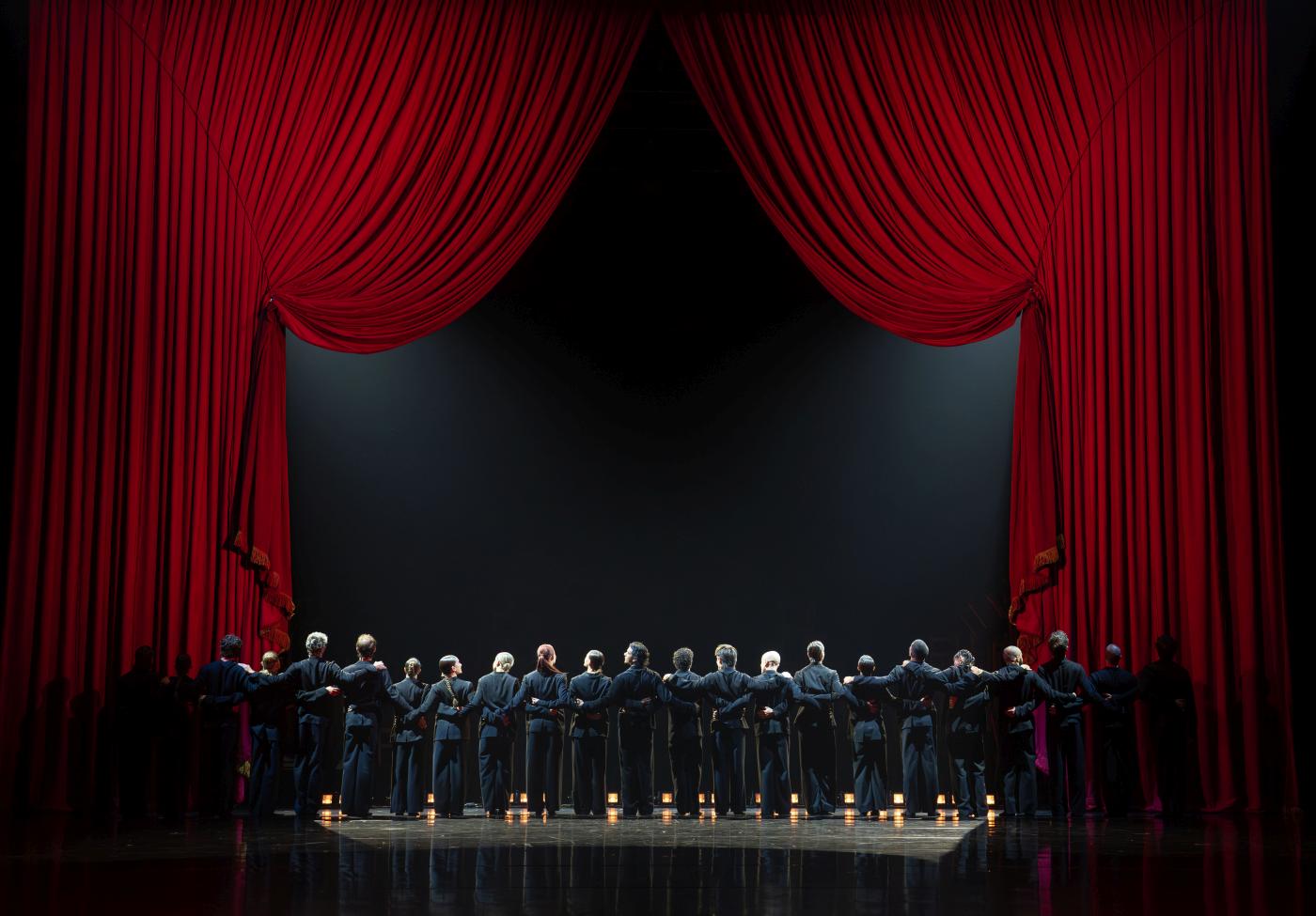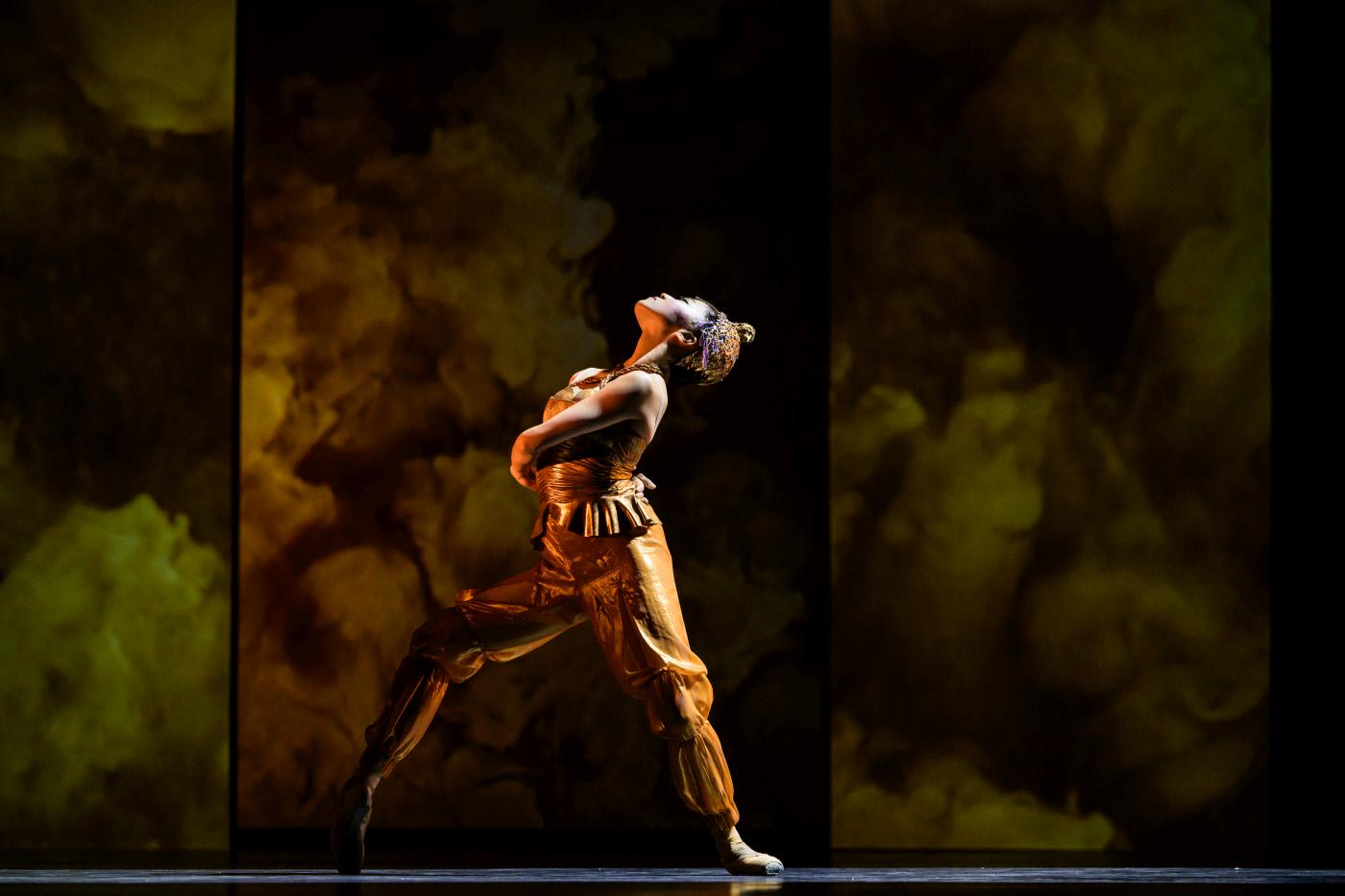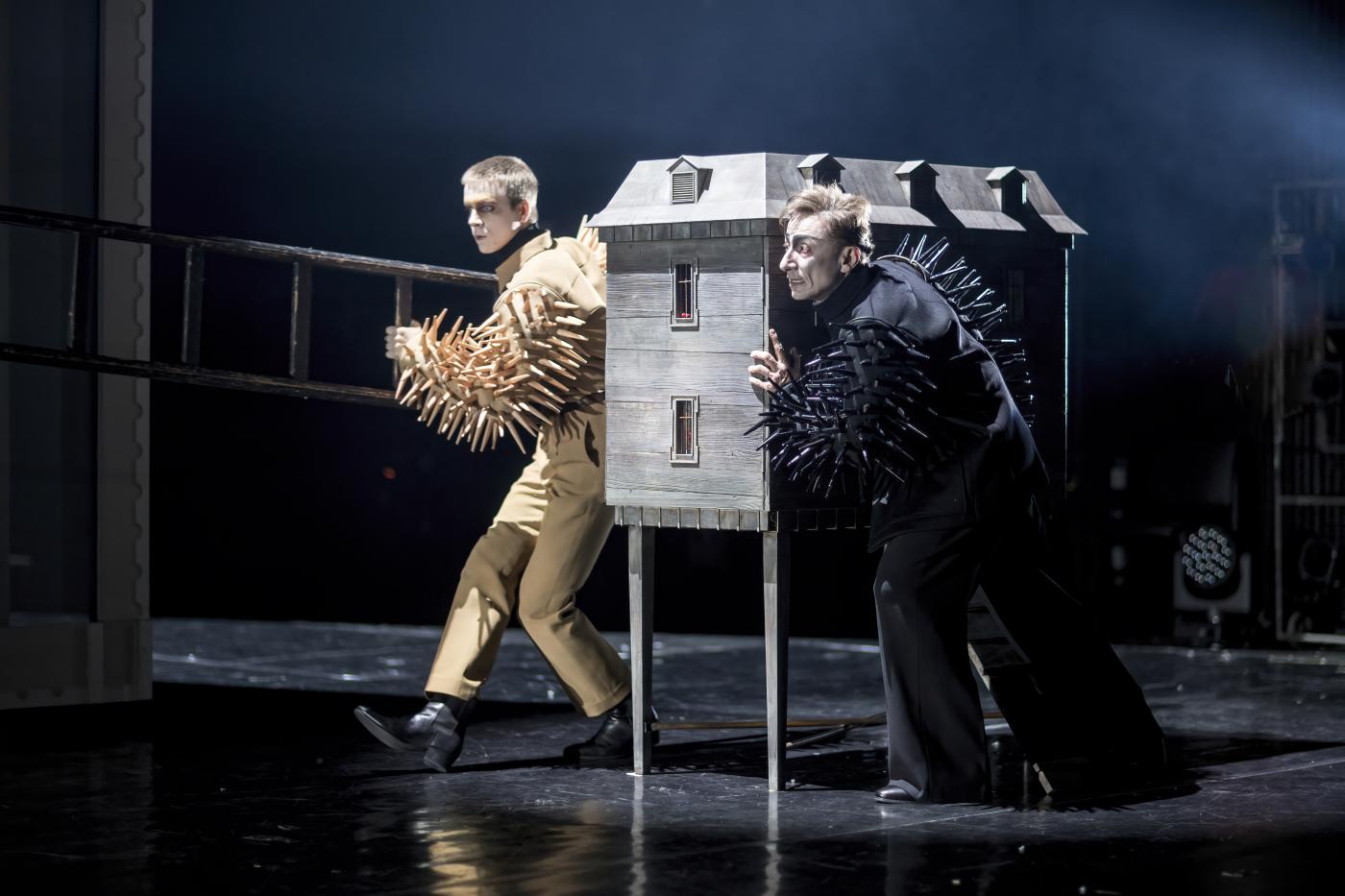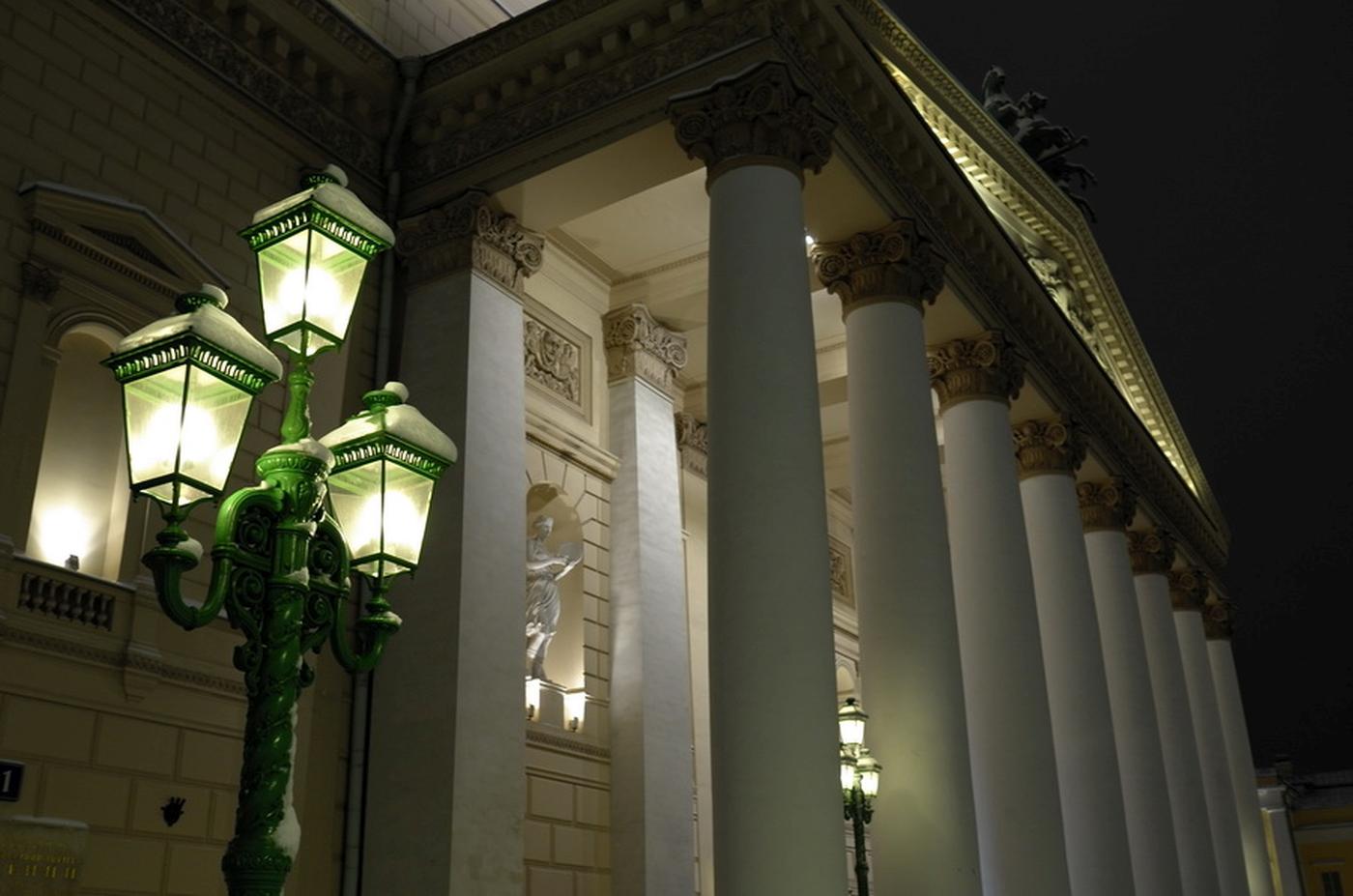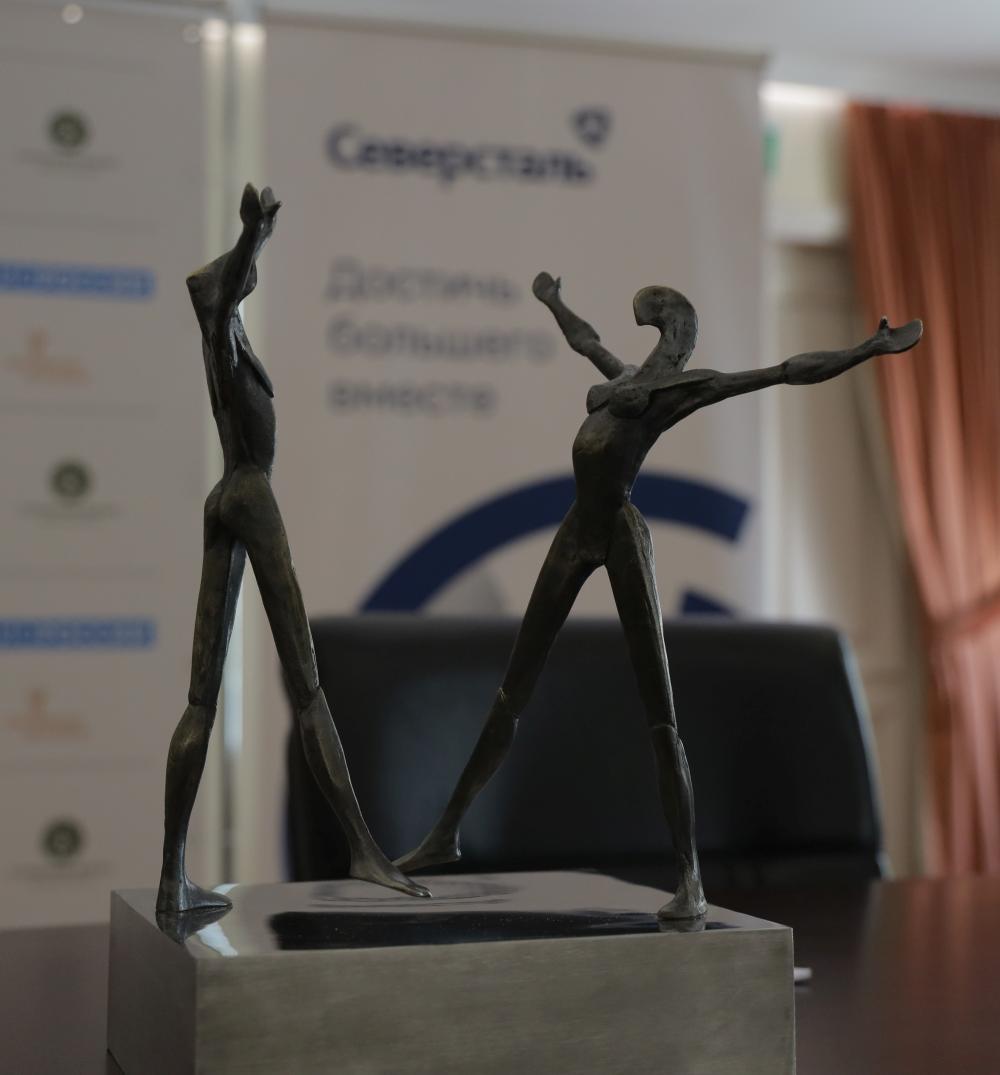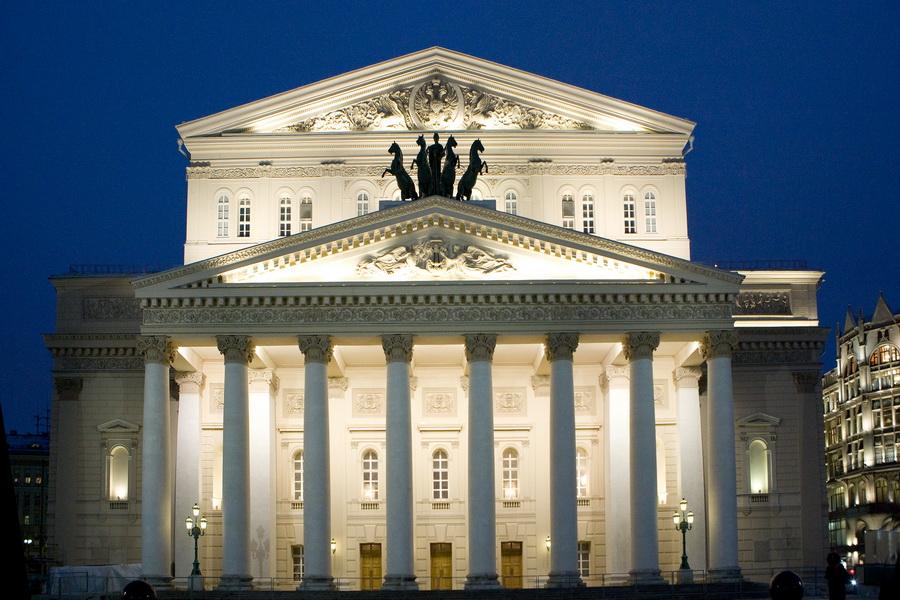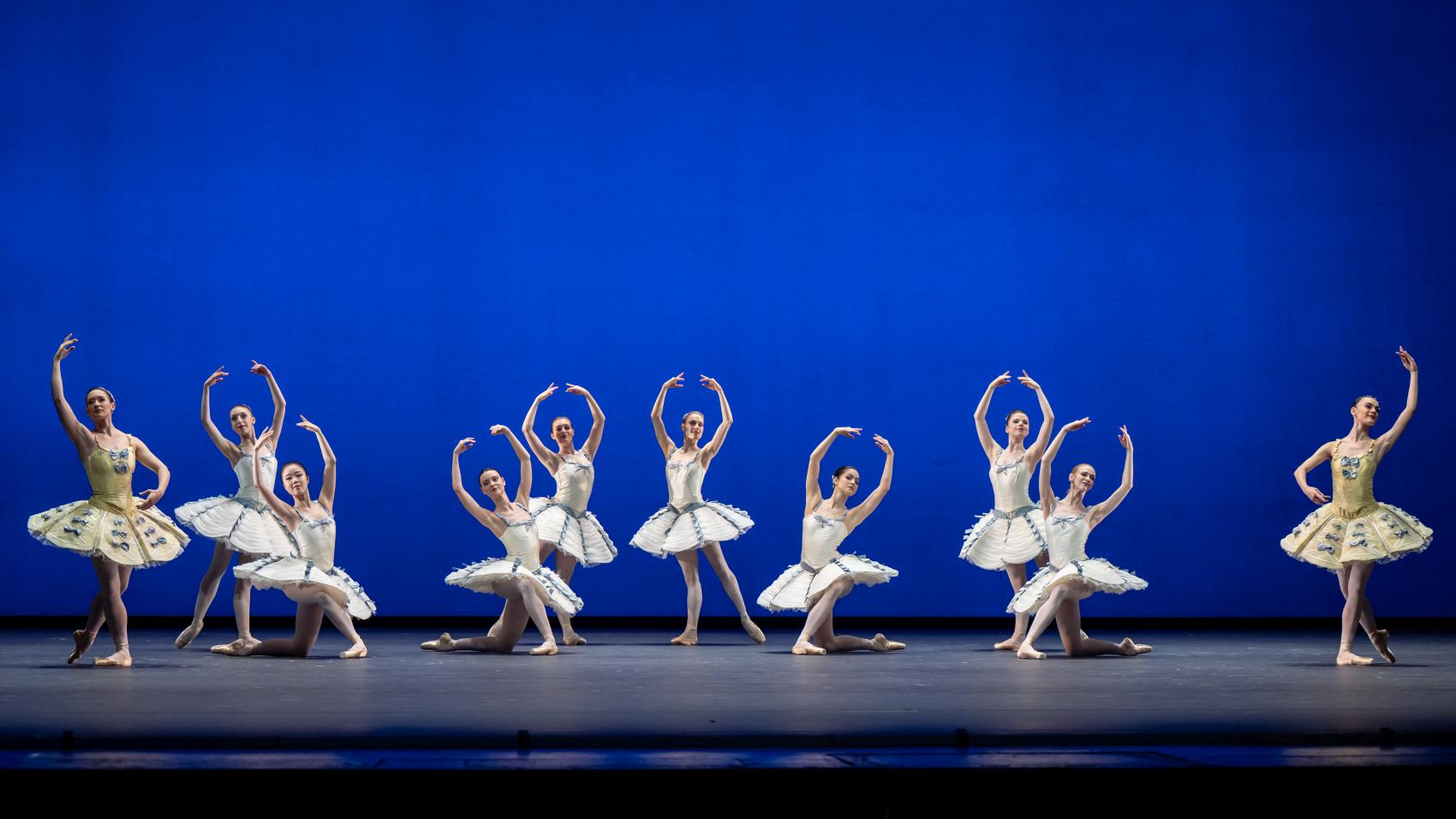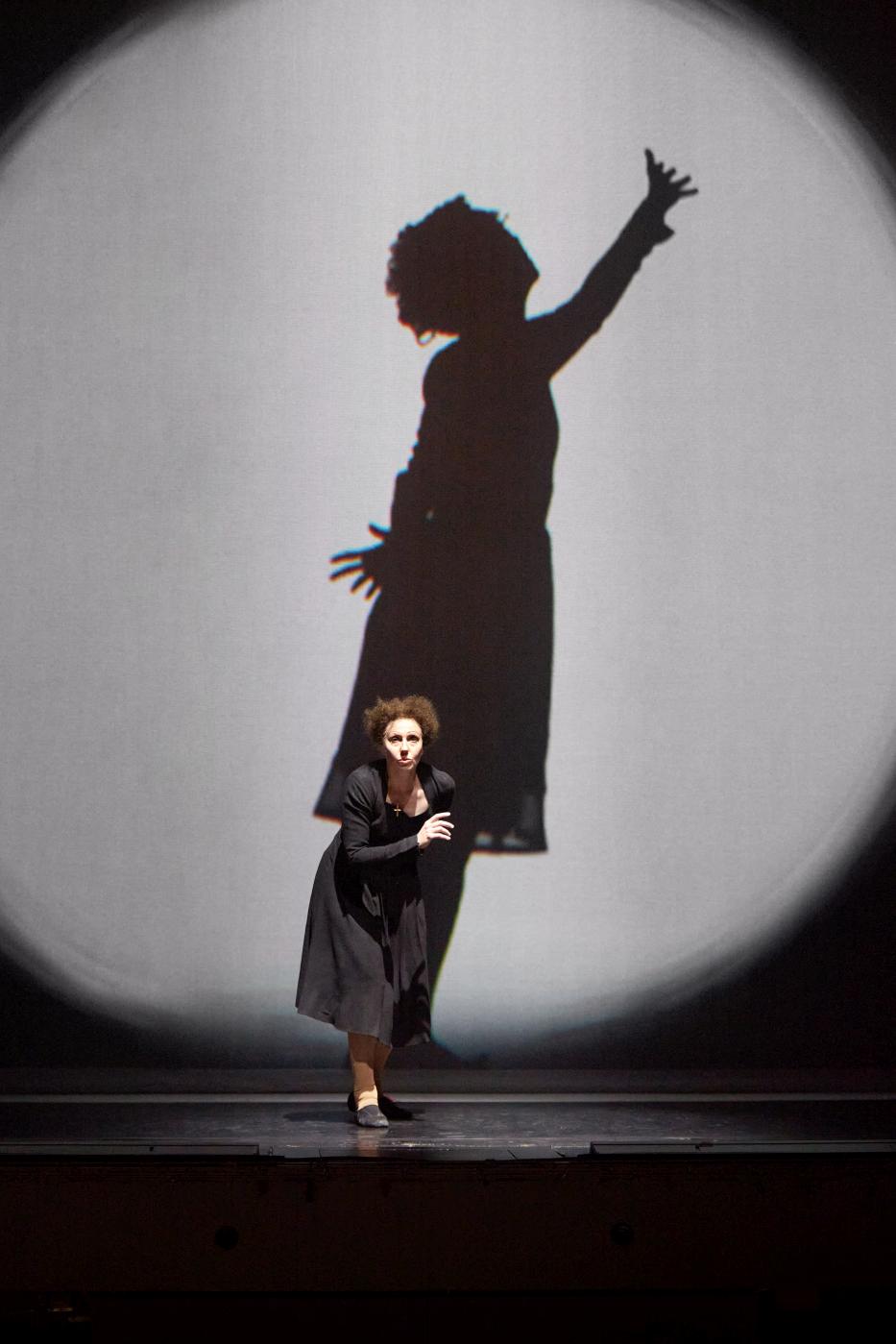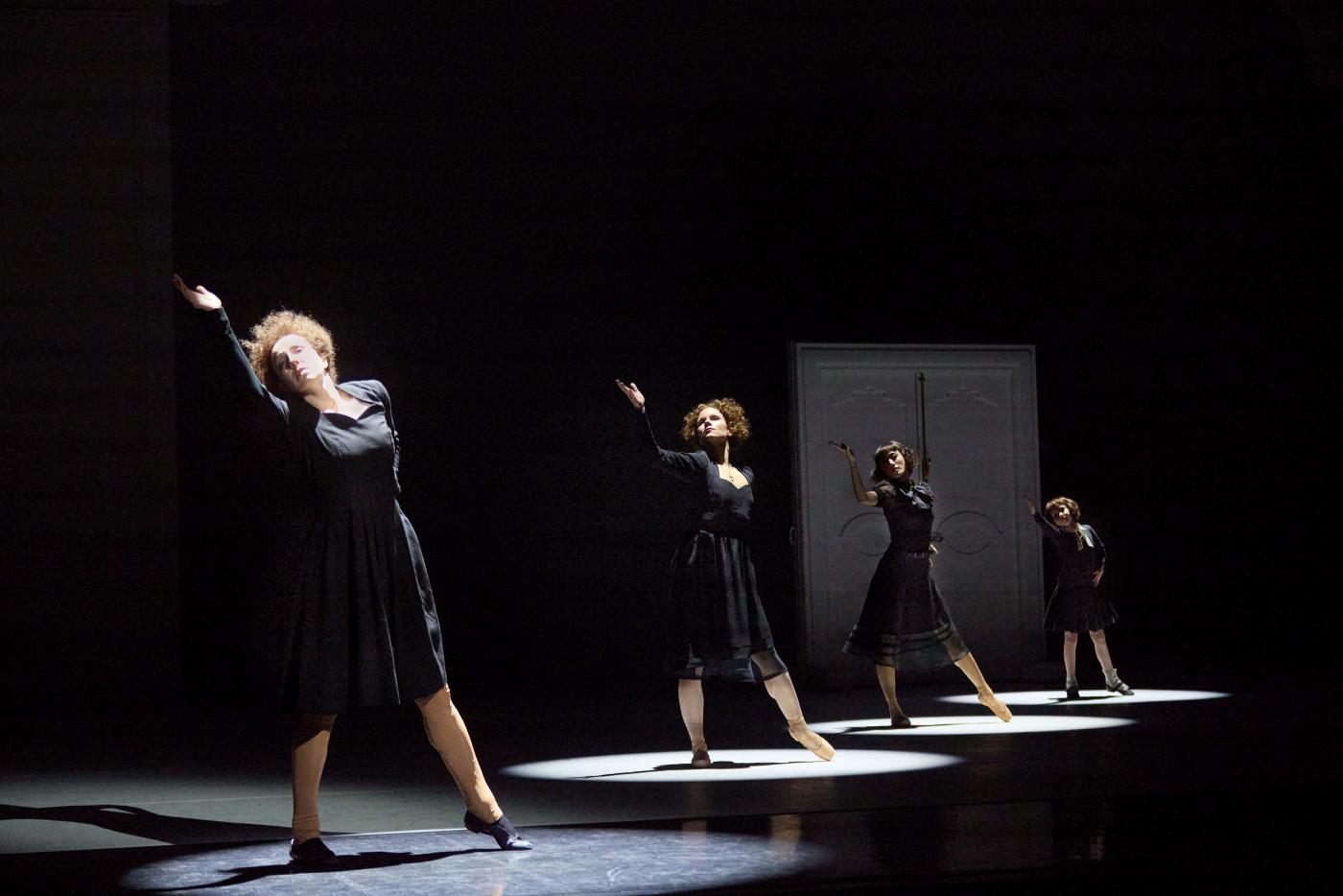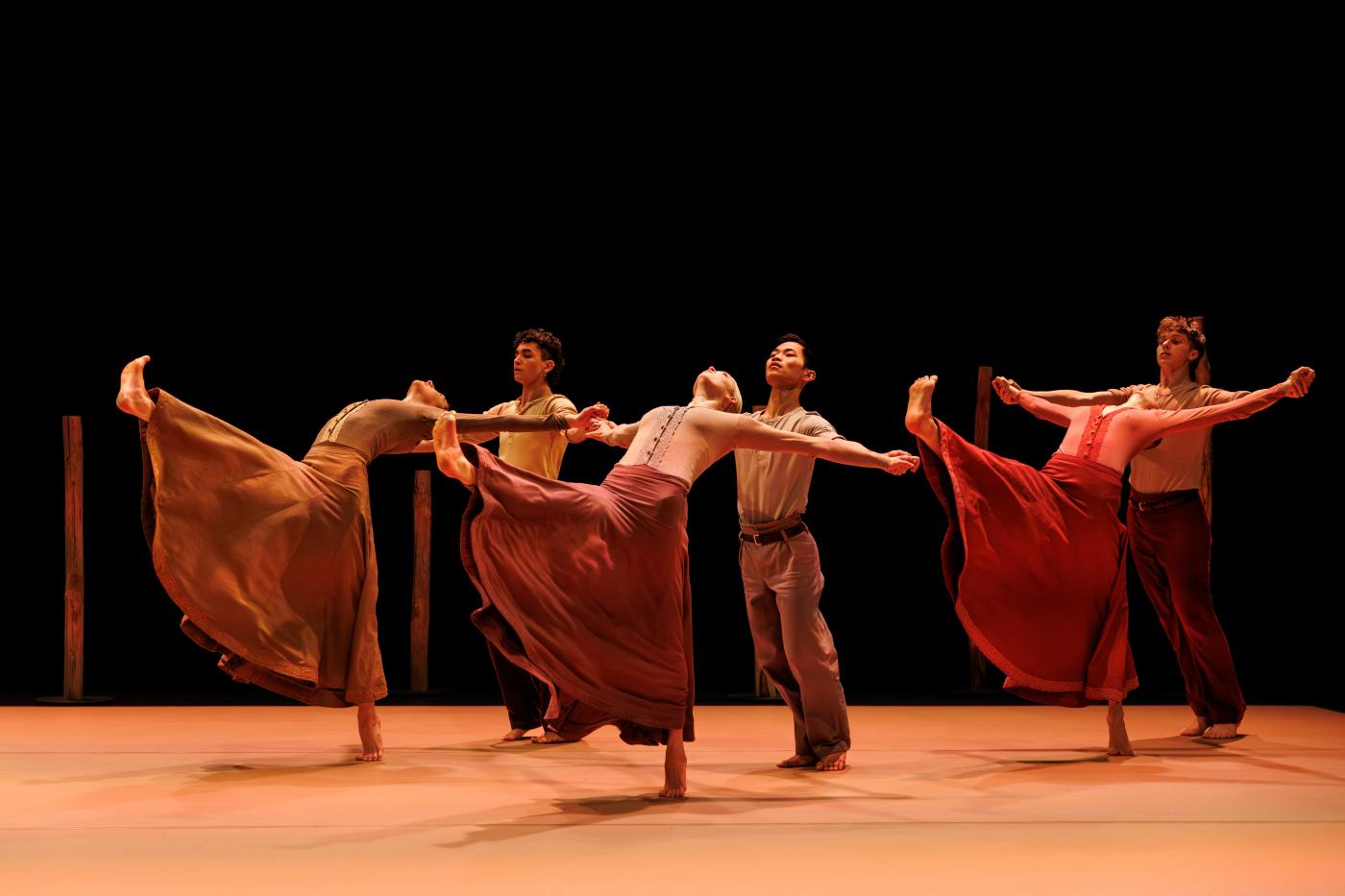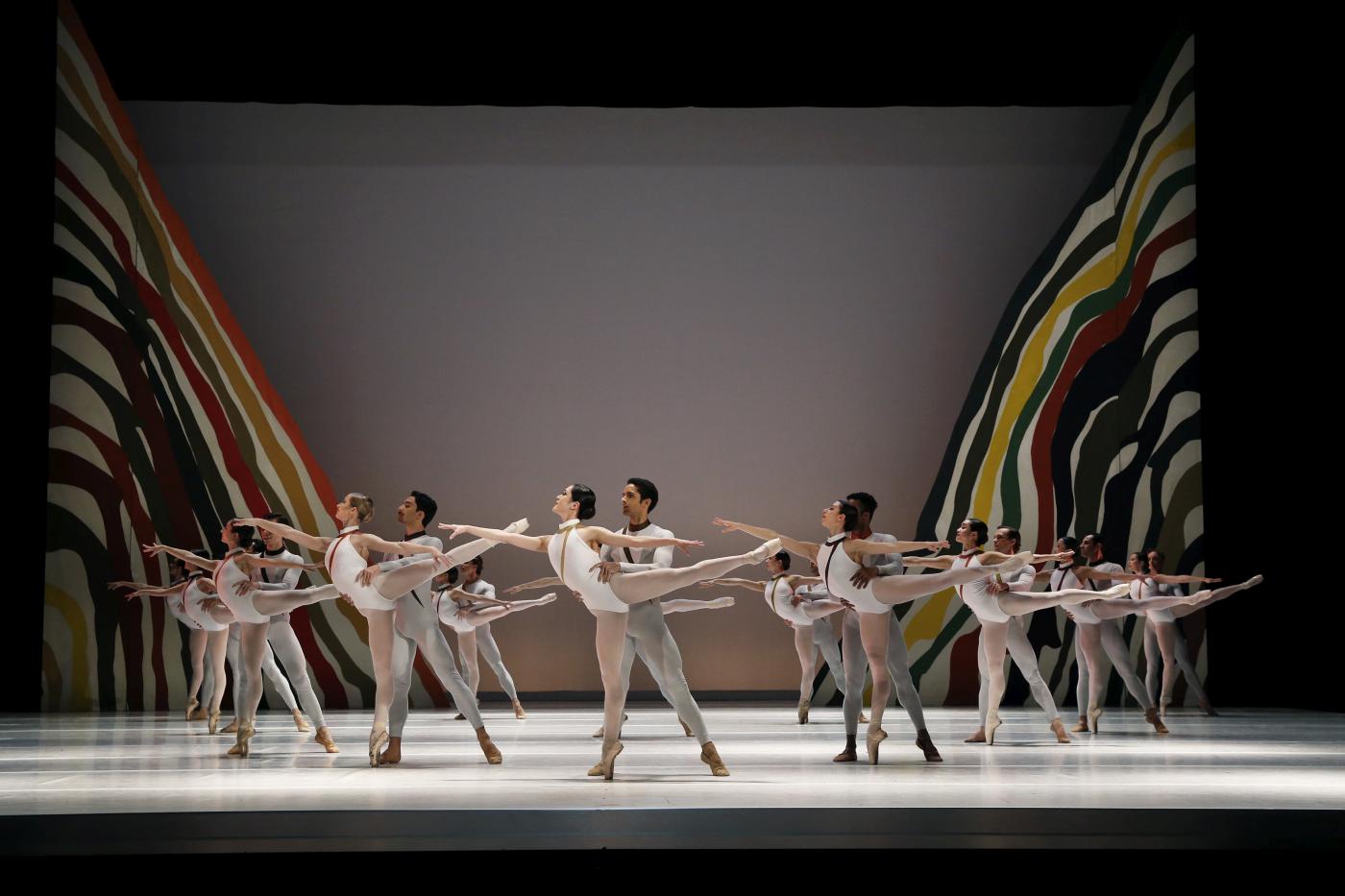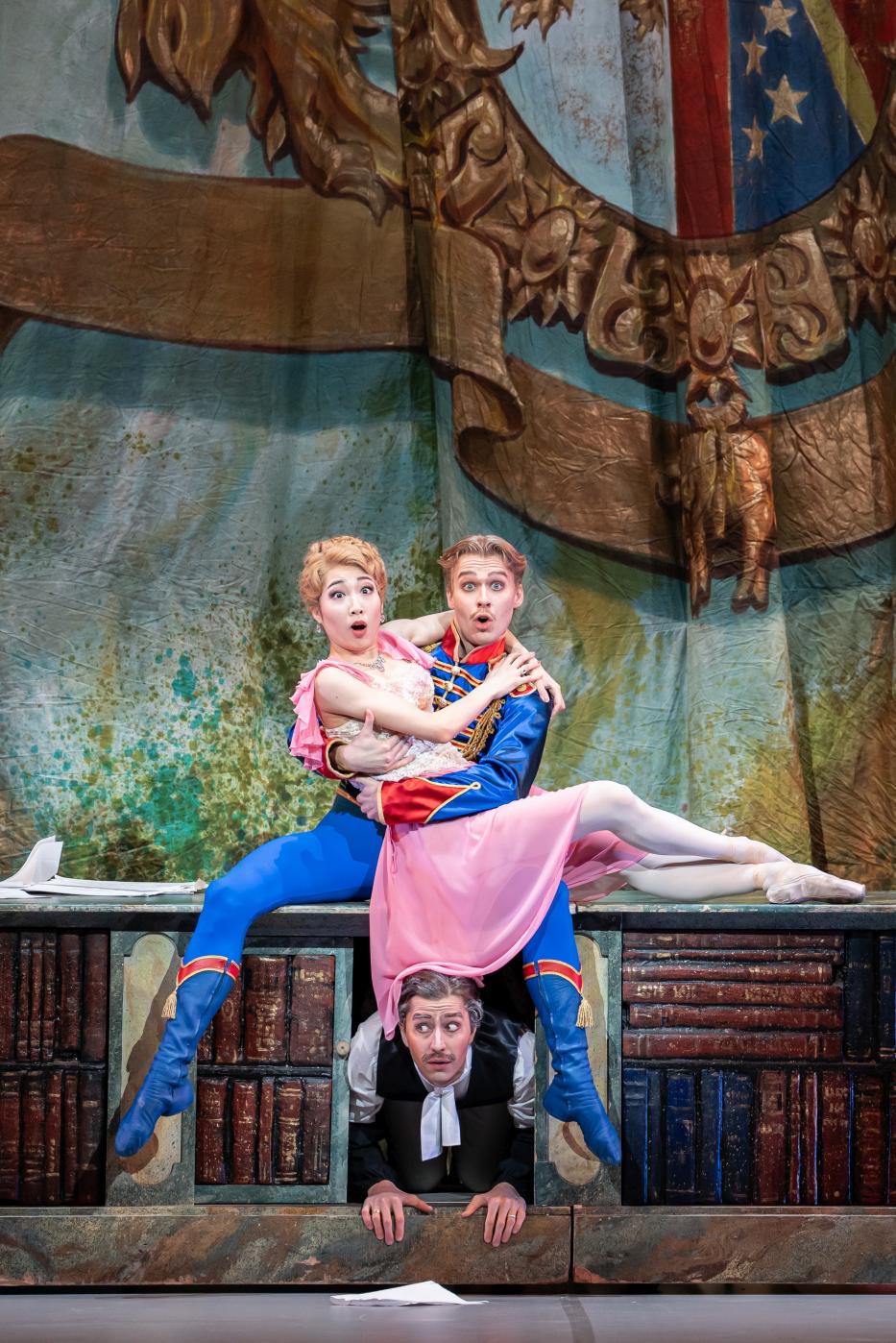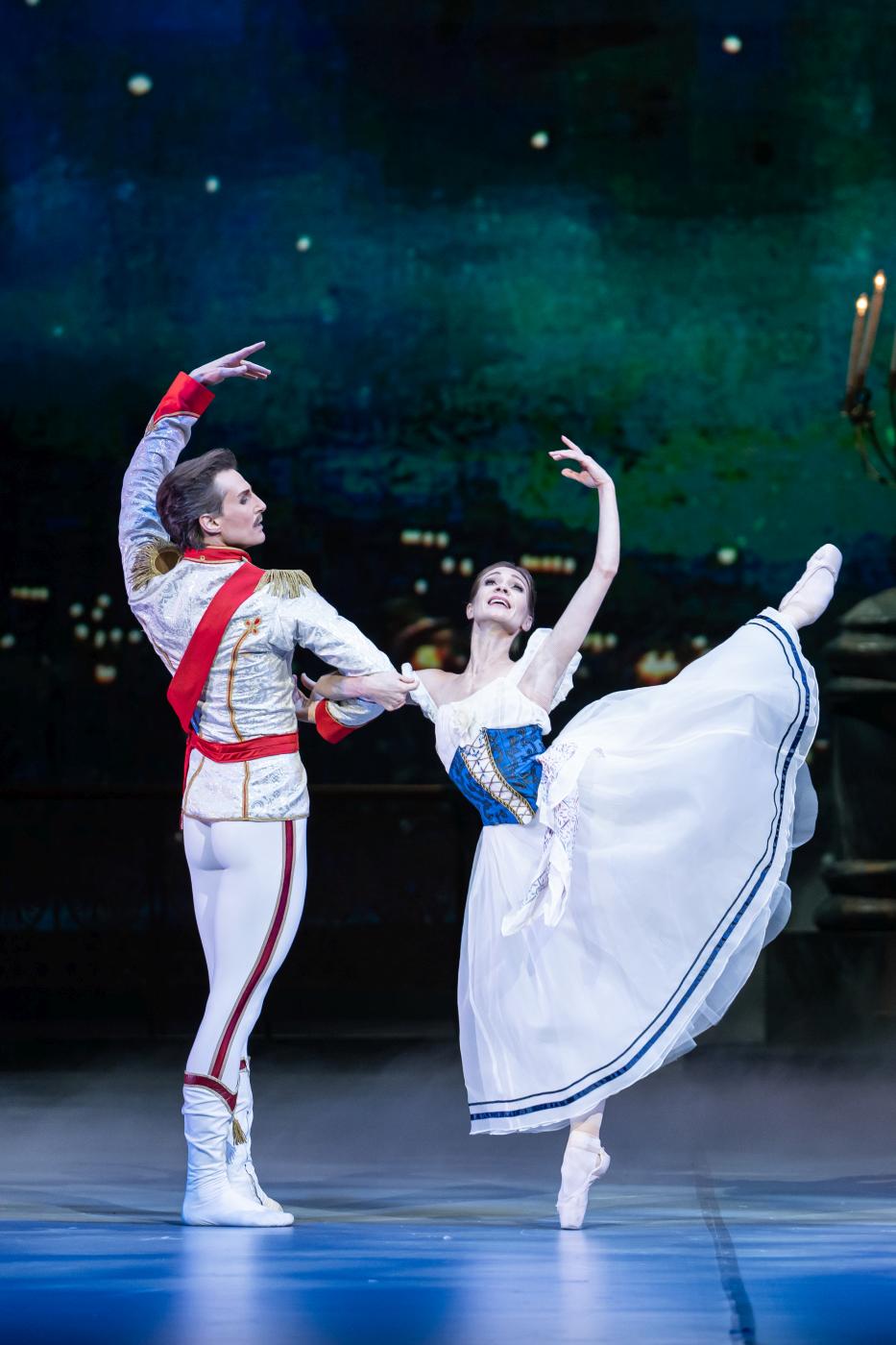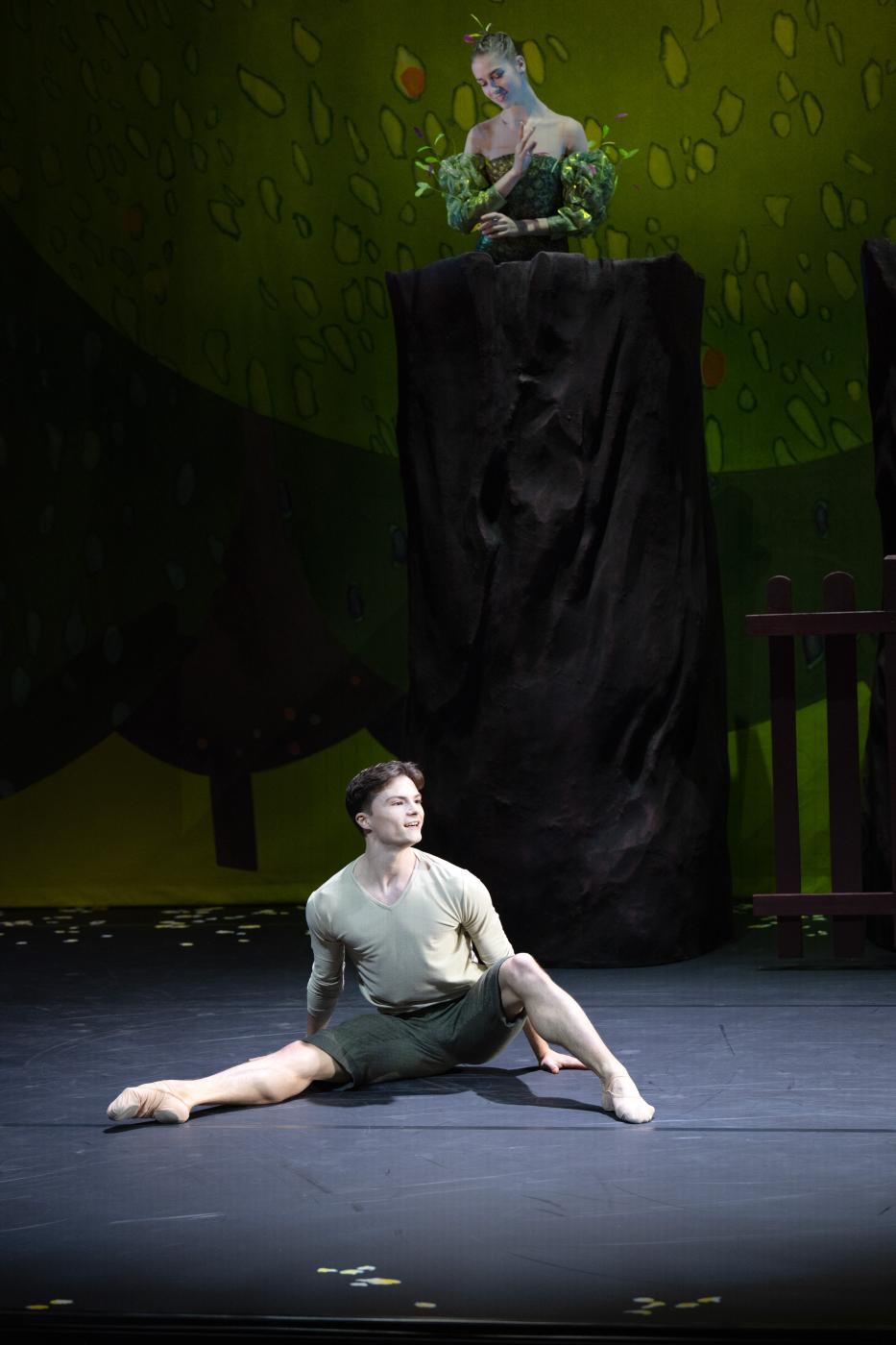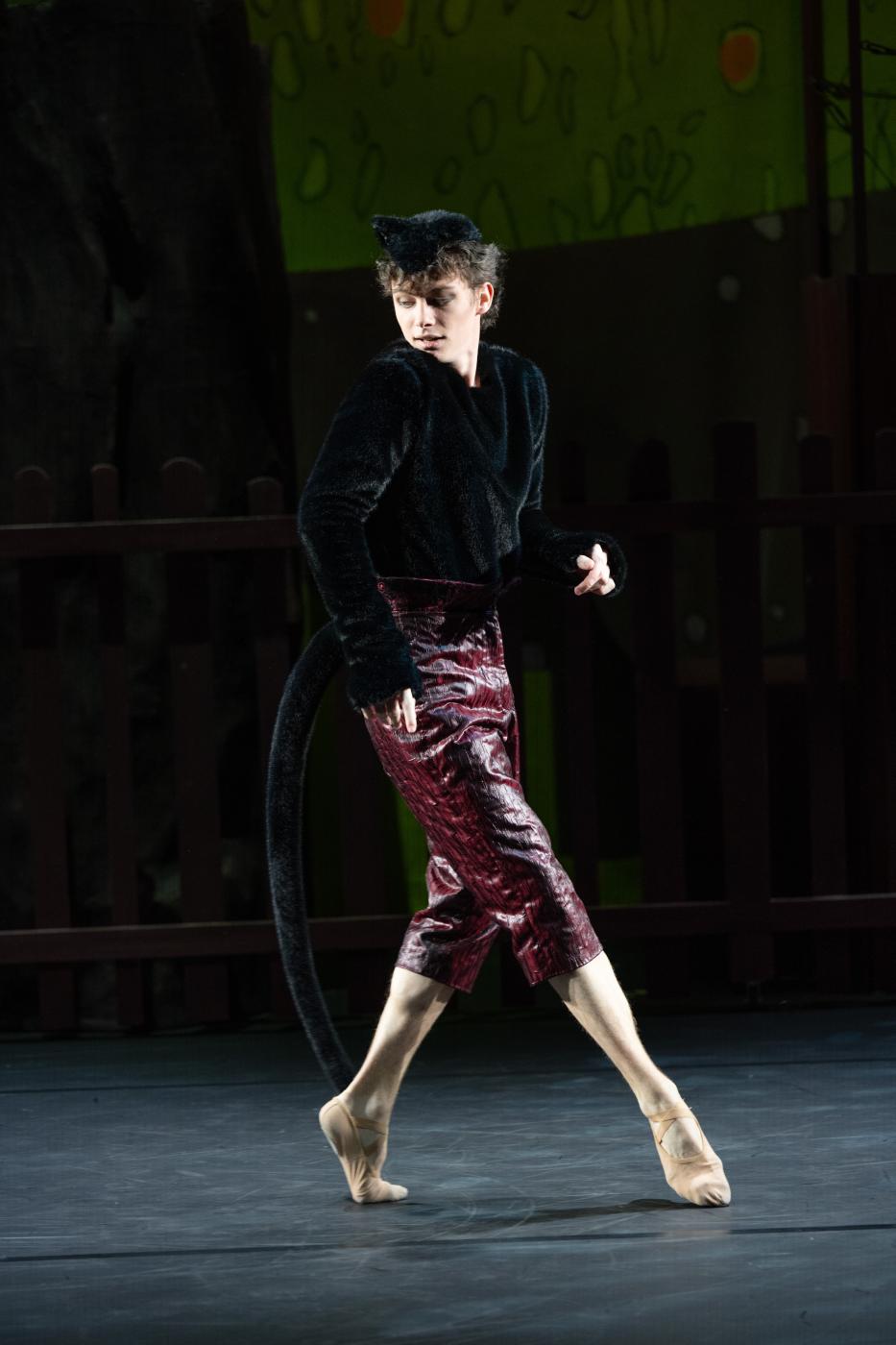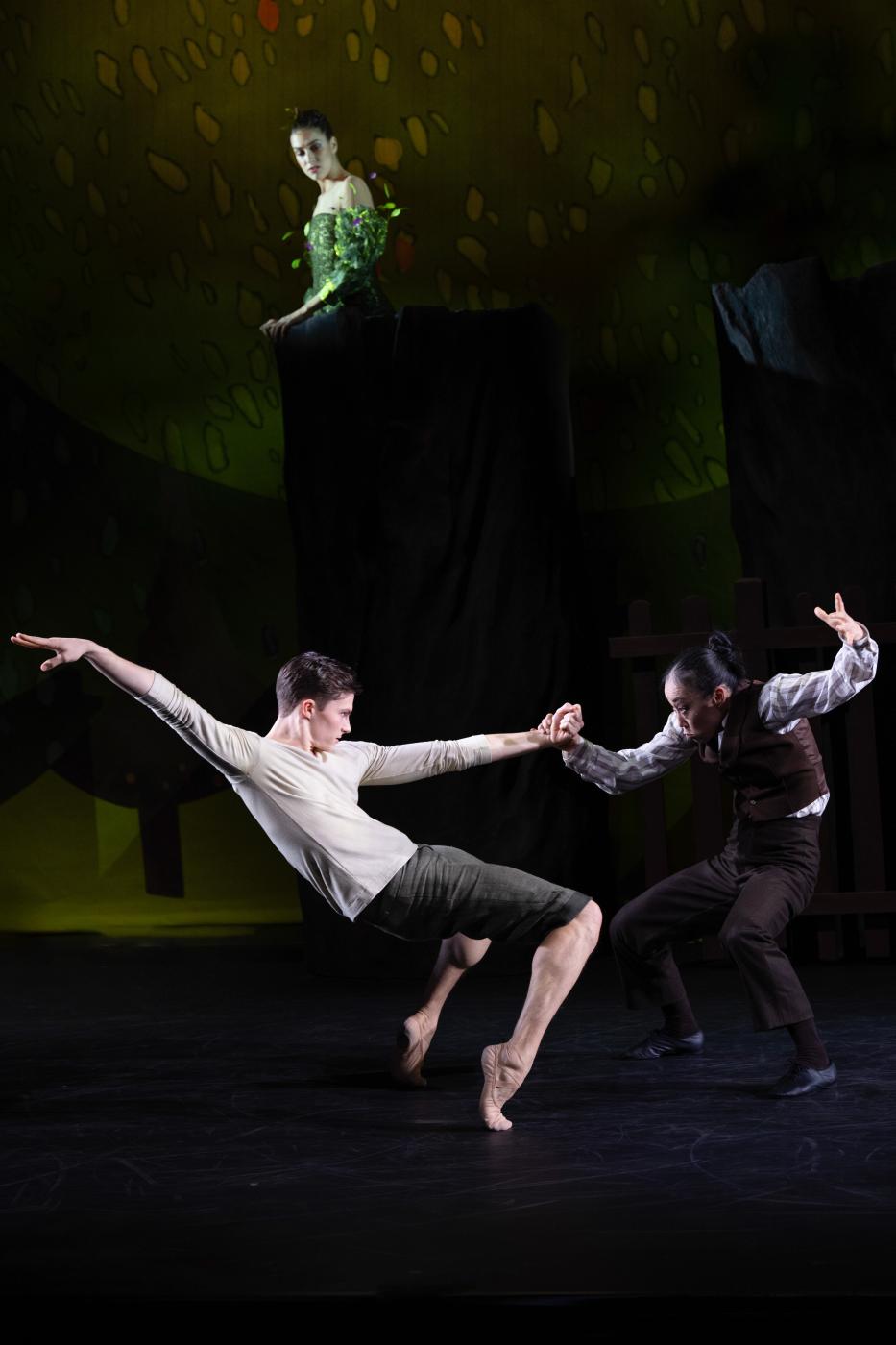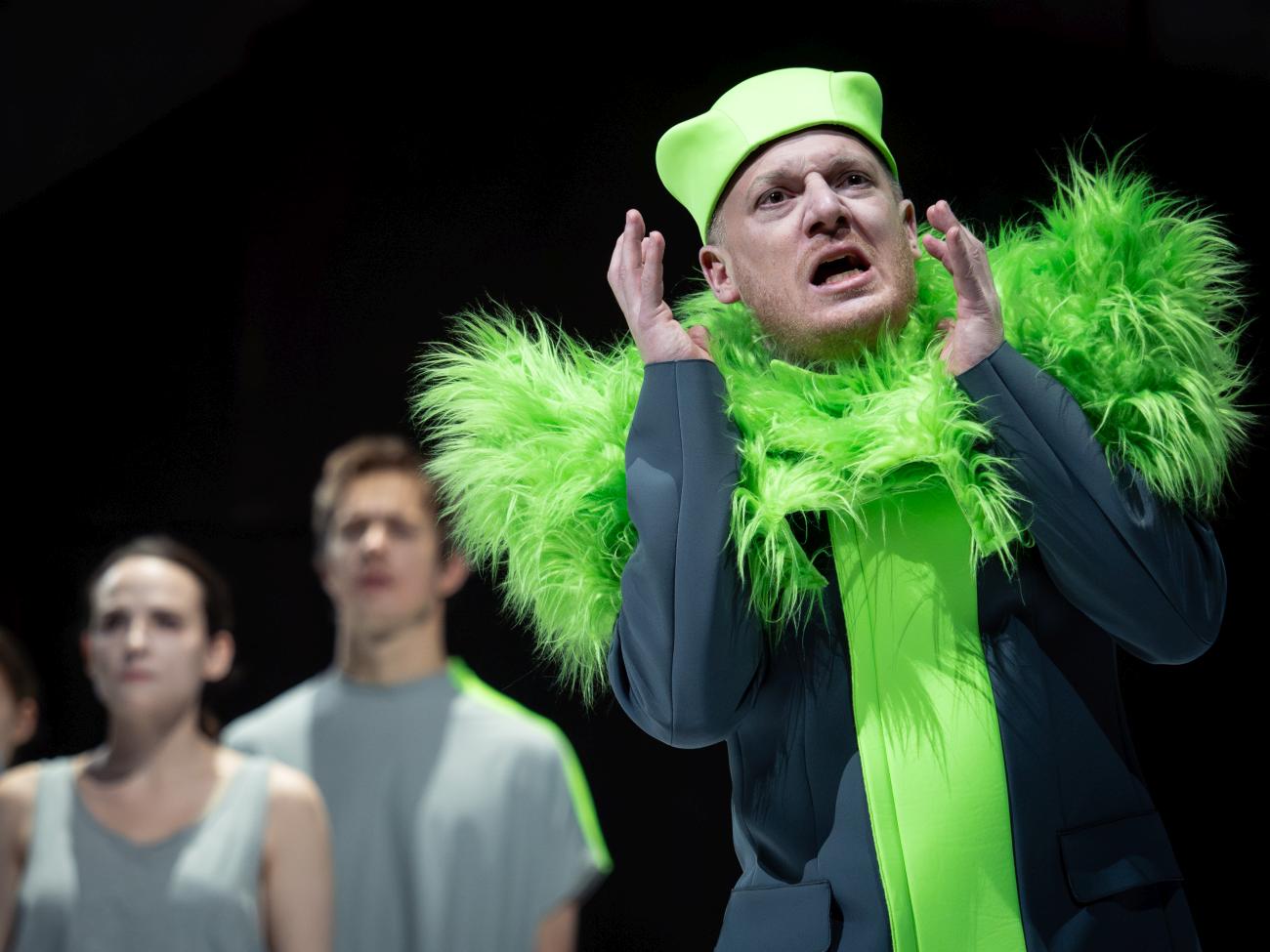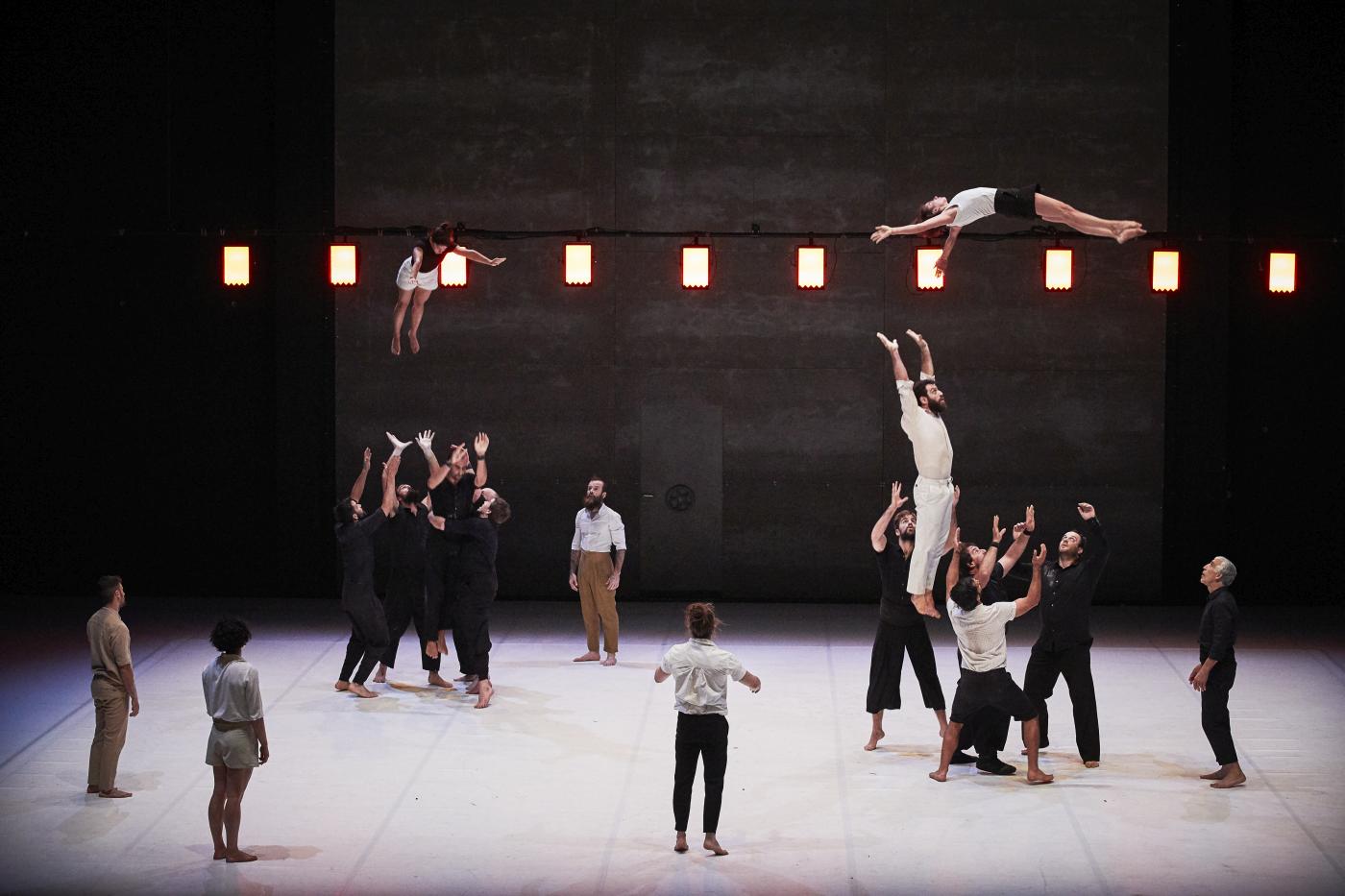Something Is Going On
“Twilight”/“Bronia”
Les Ballets de Monte Carlo
Salle Garnier Opéra de Monte-Carlo
Monte Carlo, Monaco
July 18, 2025
by Ilona Landgraf
Copyright © 2025 by Ilona Landgraf
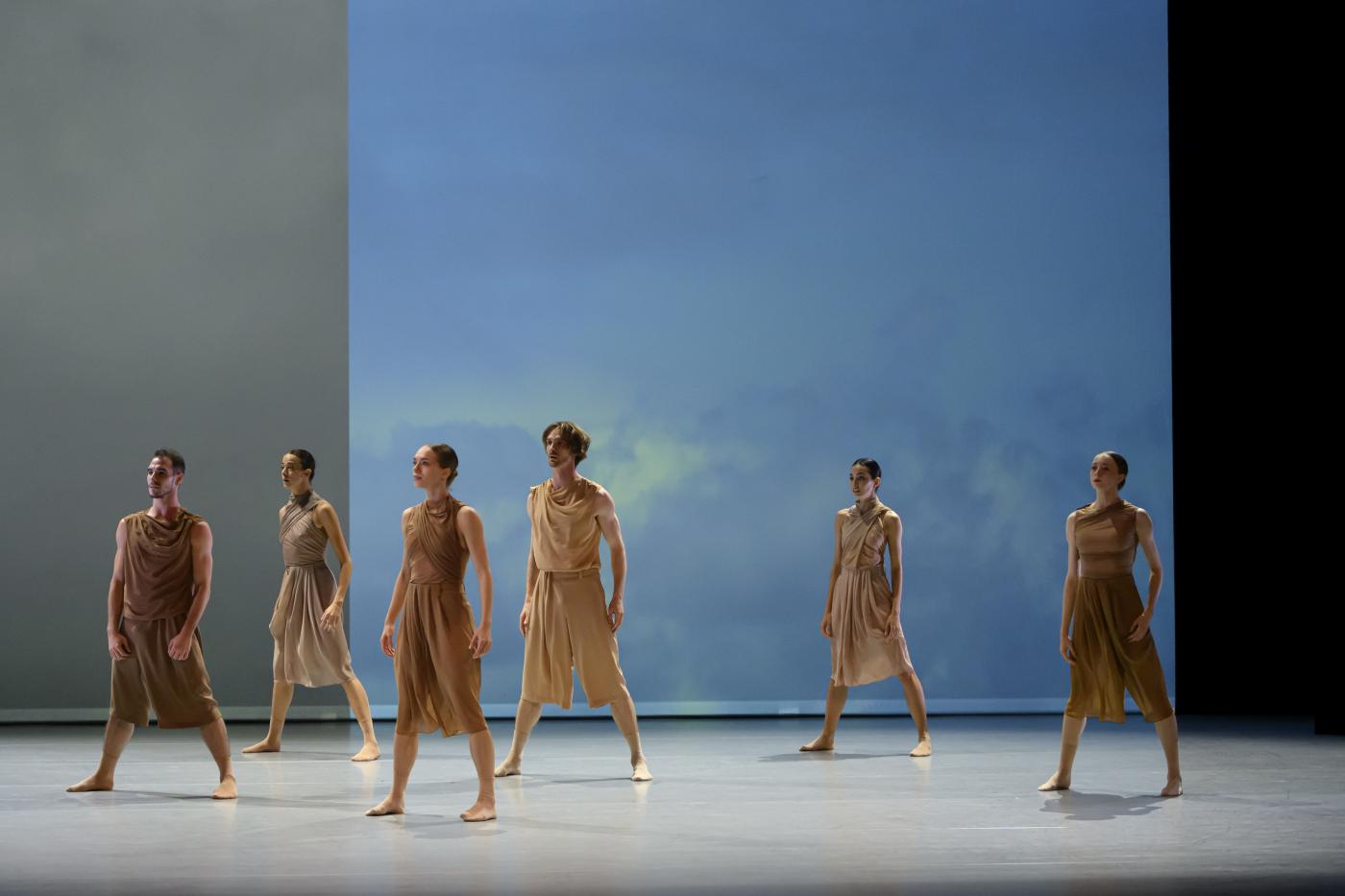 Les Ballets de Monte-Carlo closed the season with two new creations: Twilight by Lukáš Timulak and Bronia by Mattia Russo and Antonio de Rosa. So far, all productions I’ve seen in Monaco have been performed at the Grimaldi Forum, a modern glass and steel complex whose Salle des Princes lies below sea level. The new double bill was, however, presented at the Salle Garnier at the Opéra de Monte-Carlo, which is next door to the famous casino. A miniature replica of the Paris Opera, the Salle Garnier is a red and gold Italian theater built in the Second Empire style. It was here that Sergei Diaghilev’s Ballets Russes took up residence in 1911. Until the First World War, Diaghilev’s company rehearsed, prepared new productions, and stored sets and props in Monte-Carlo. On April 9, 1911, the Ballets Russes gave its first performance, which featured Scheherazade and Giselle. On April 19th, Nijinsky and Karsavina gave their debut in Fokine’s Le Spectre de la Rose. This history was significant in the context of the recent premiere.
Les Ballets de Monte-Carlo closed the season with two new creations: Twilight by Lukáš Timulak and Bronia by Mattia Russo and Antonio de Rosa. So far, all productions I’ve seen in Monaco have been performed at the Grimaldi Forum, a modern glass and steel complex whose Salle des Princes lies below sea level. The new double bill was, however, presented at the Salle Garnier at the Opéra de Monte-Carlo, which is next door to the famous casino. A miniature replica of the Paris Opera, the Salle Garnier is a red and gold Italian theater built in the Second Empire style. It was here that Sergei Diaghilev’s Ballets Russes took up residence in 1911. Until the First World War, Diaghilev’s company rehearsed, prepared new productions, and stored sets and props in Monte-Carlo. On April 9, 1911, the Ballets Russes gave its first performance, which featured Scheherazade and Giselle. On April 19th, Nijinsky and Karsavina gave their debut in Fokine’s Le Spectre de la Rose. This history was significant in the context of the recent premiere.
But let’s begin with Timulak’s Twilight.
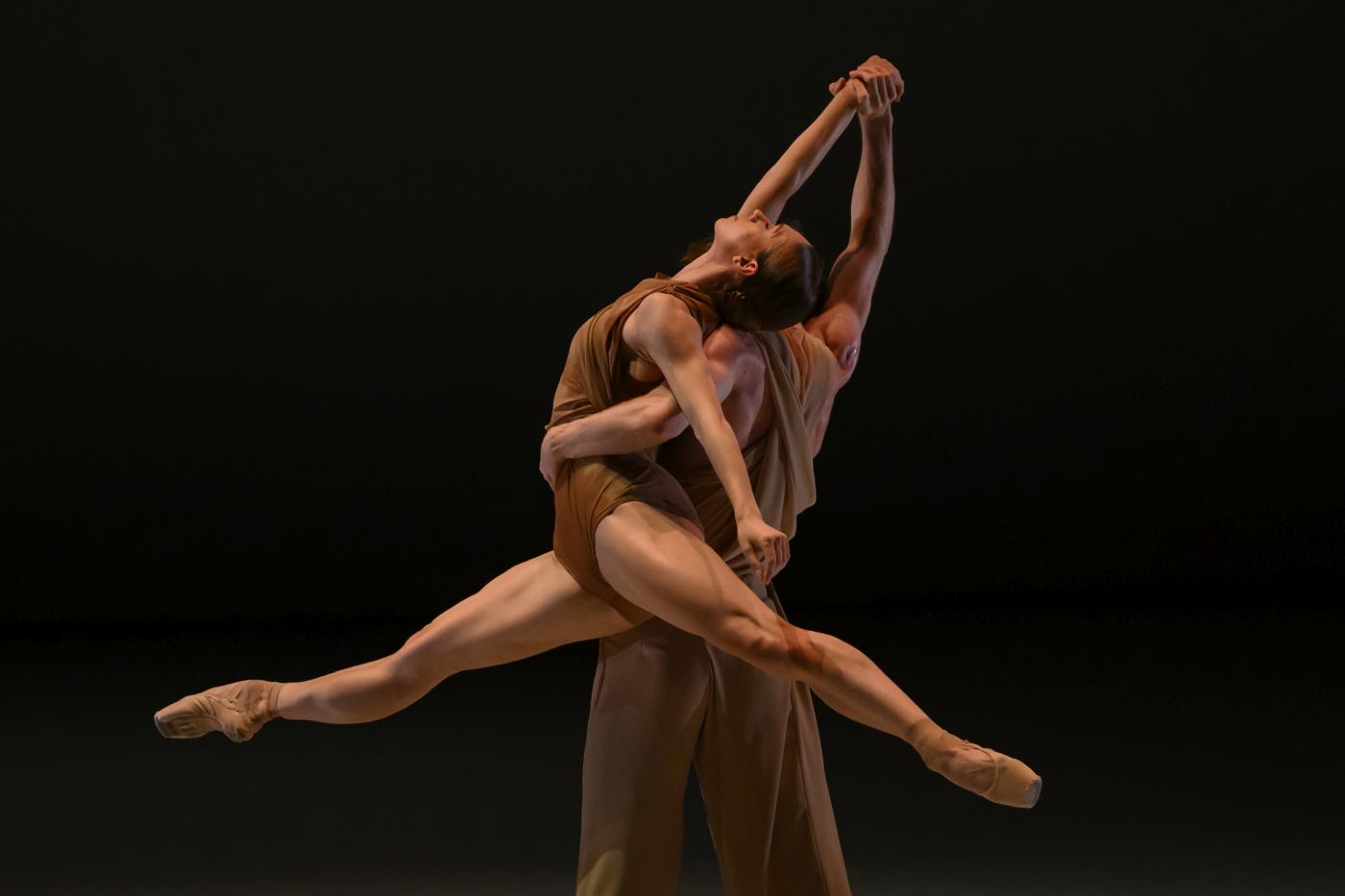
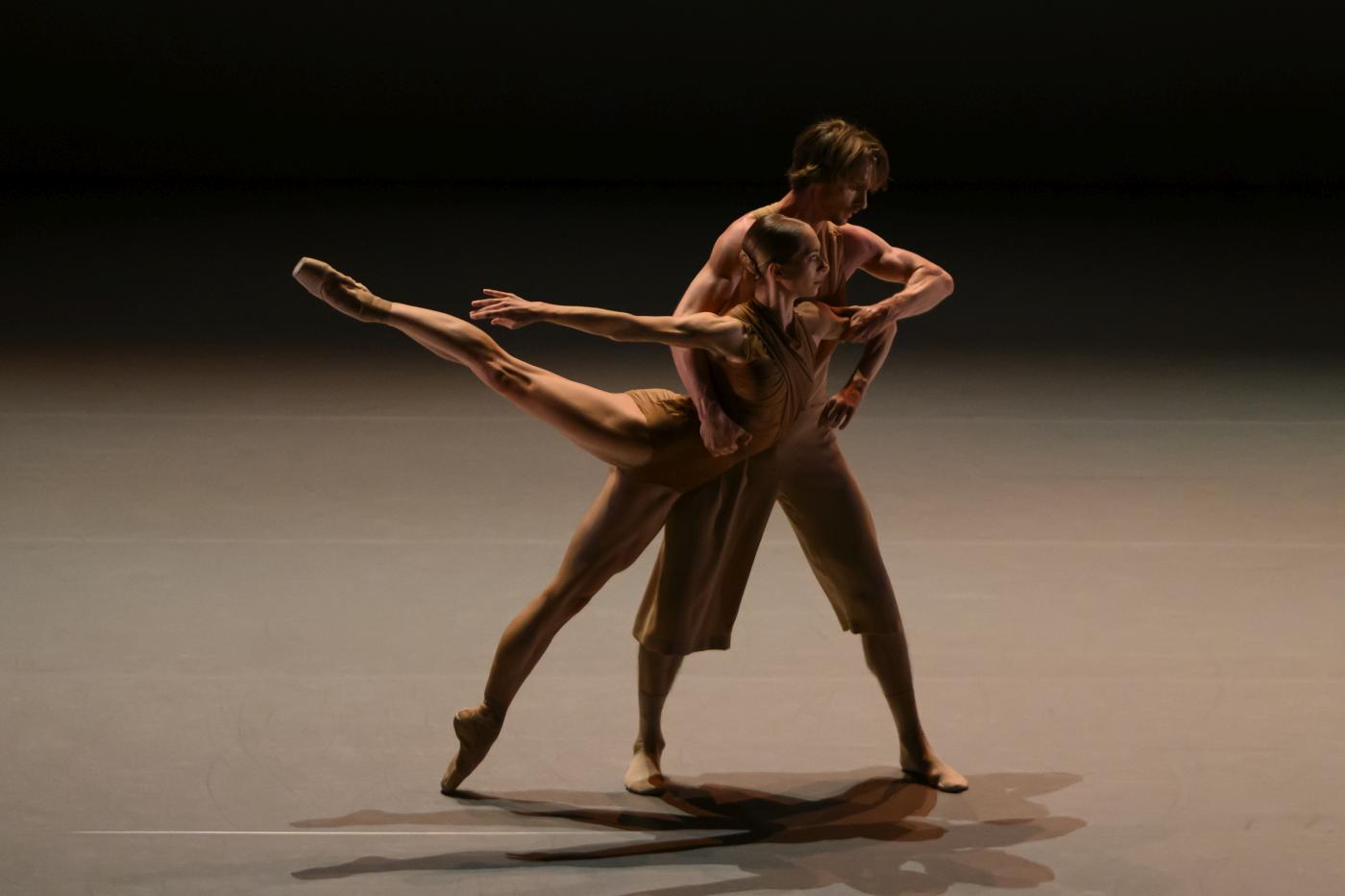 Timulak was trained at the Dance Conservatory in Bratislava, Slovakia, and the Académie de Danse Classique Princesse Grace in Monaco. In 1997, he joined Les Ballets de Monte-Carlo and three years later, Nederlands Dans Theater, where he began to choreograph.
Timulak was trained at the Dance Conservatory in Bratislava, Slovakia, and the Académie de Danse Classique Princesse Grace in Monaco. In 1997, he joined Les Ballets de Monte-Carlo and three years later, Nederlands Dans Theater, where he began to choreograph.
Muffled bass sounds and a far-away humming accompanied the two men and two women of Twilight as they walked in line toward the audience (music by Hauschka, i.e., Volker Bertelmann).
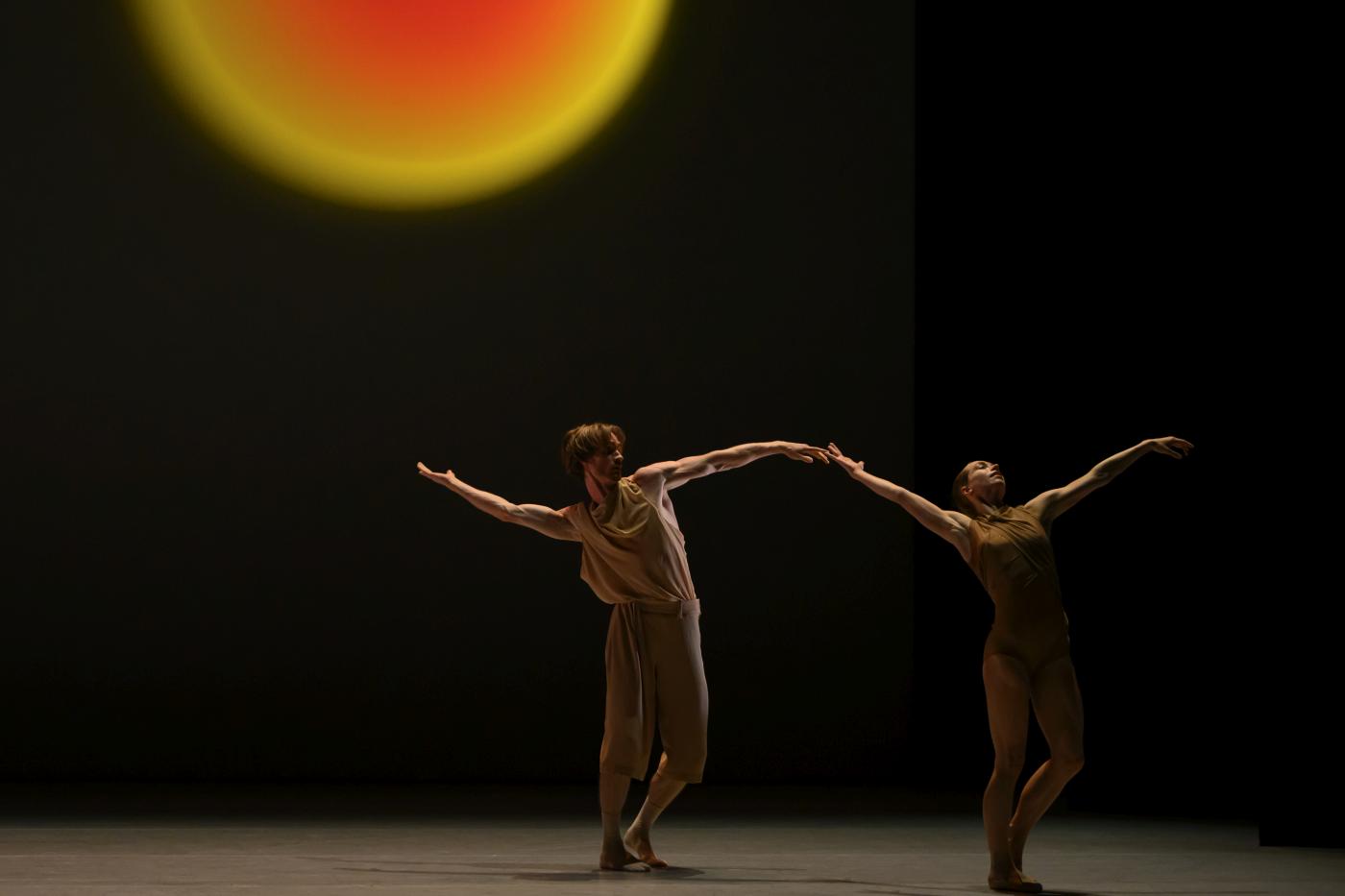
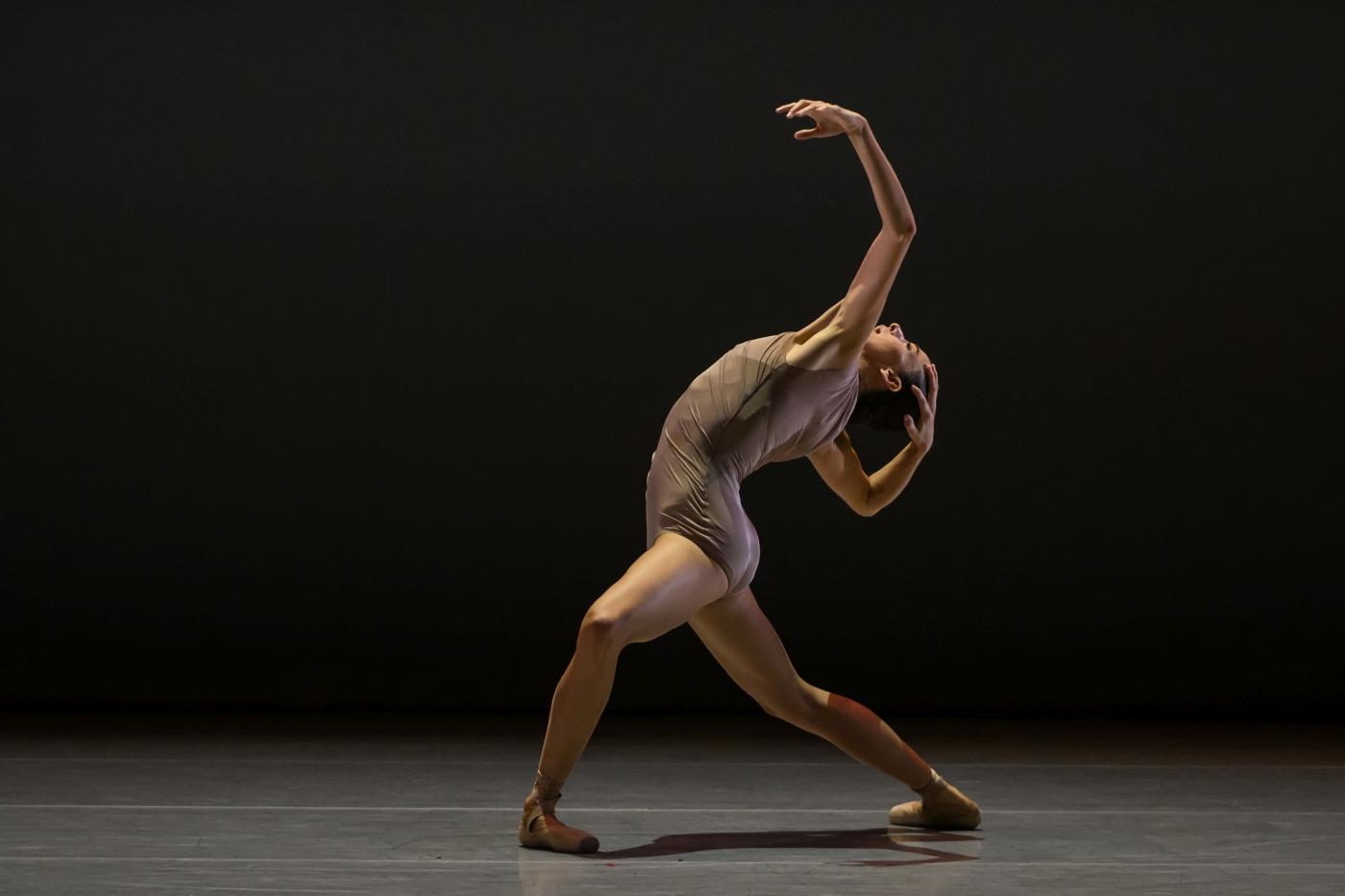 It was unclear if the gray-blue color of the black-framed backdrop represented dawn or dusk (set design by Peter Bil’ak). Suddenly, two dancers ran off, and the remaining two stepped into deep lunges, bent back slowly, ran after their outstretched arms, and circled them with both palms touching. Group scenes, duos, and solos alternated, while a glowing yellow-orange sun appeared at the upper backdrop and then very slowly sank. As in many modern pieces, the dynamic, pace, and movement direction varied constantly but not randomly. Instead, Twilight seemed the consequential result of an interaction with nature.
It was unclear if the gray-blue color of the black-framed backdrop represented dawn or dusk (set design by Peter Bil’ak). Suddenly, two dancers ran off, and the remaining two stepped into deep lunges, bent back slowly, ran after their outstretched arms, and circled them with both palms touching. Group scenes, duos, and solos alternated, while a glowing yellow-orange sun appeared at the upper backdrop and then very slowly sank. As in many modern pieces, the dynamic, pace, and movement direction varied constantly but not randomly. Instead, Twilight seemed the consequential result of an interaction with nature.
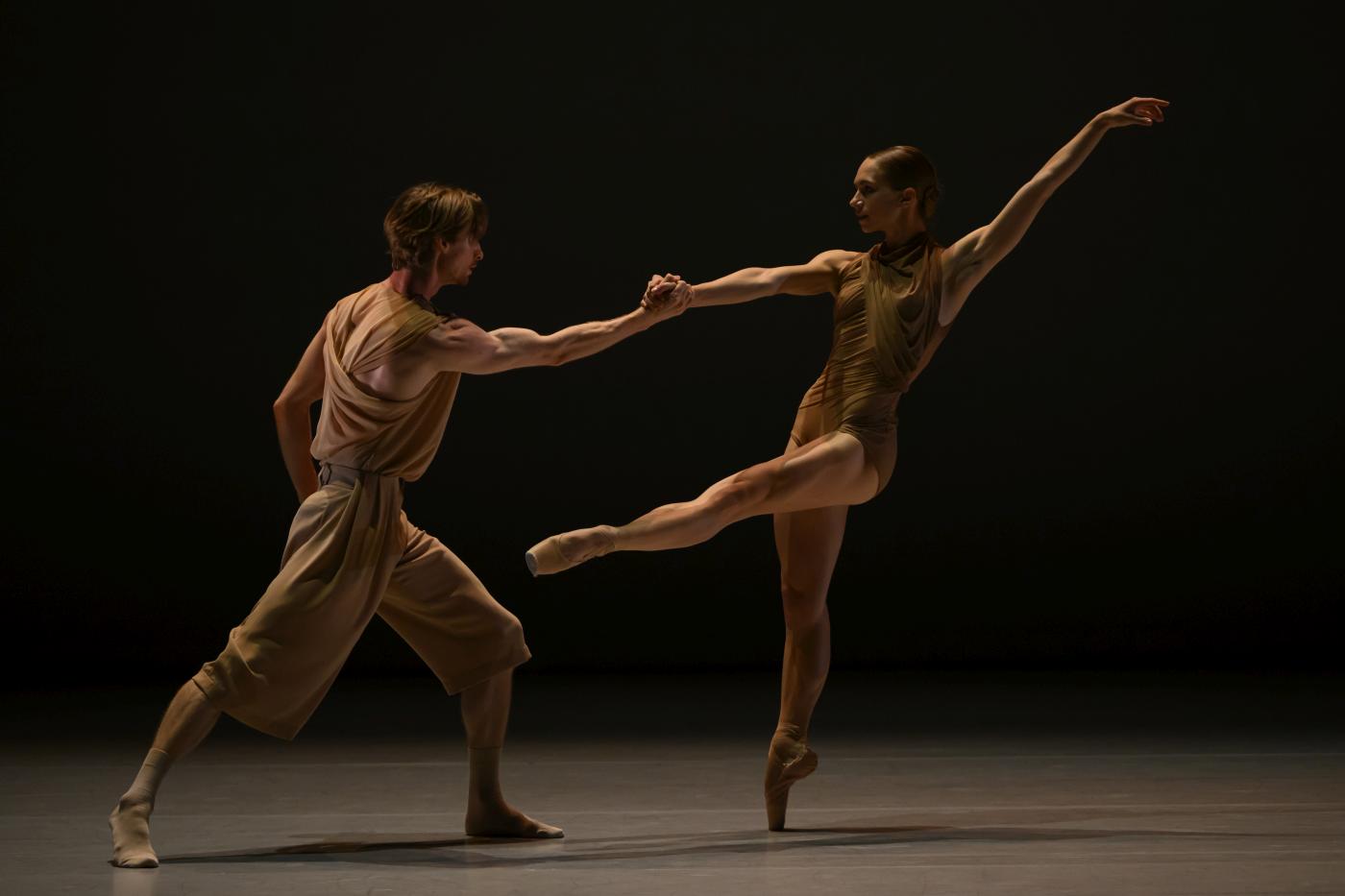
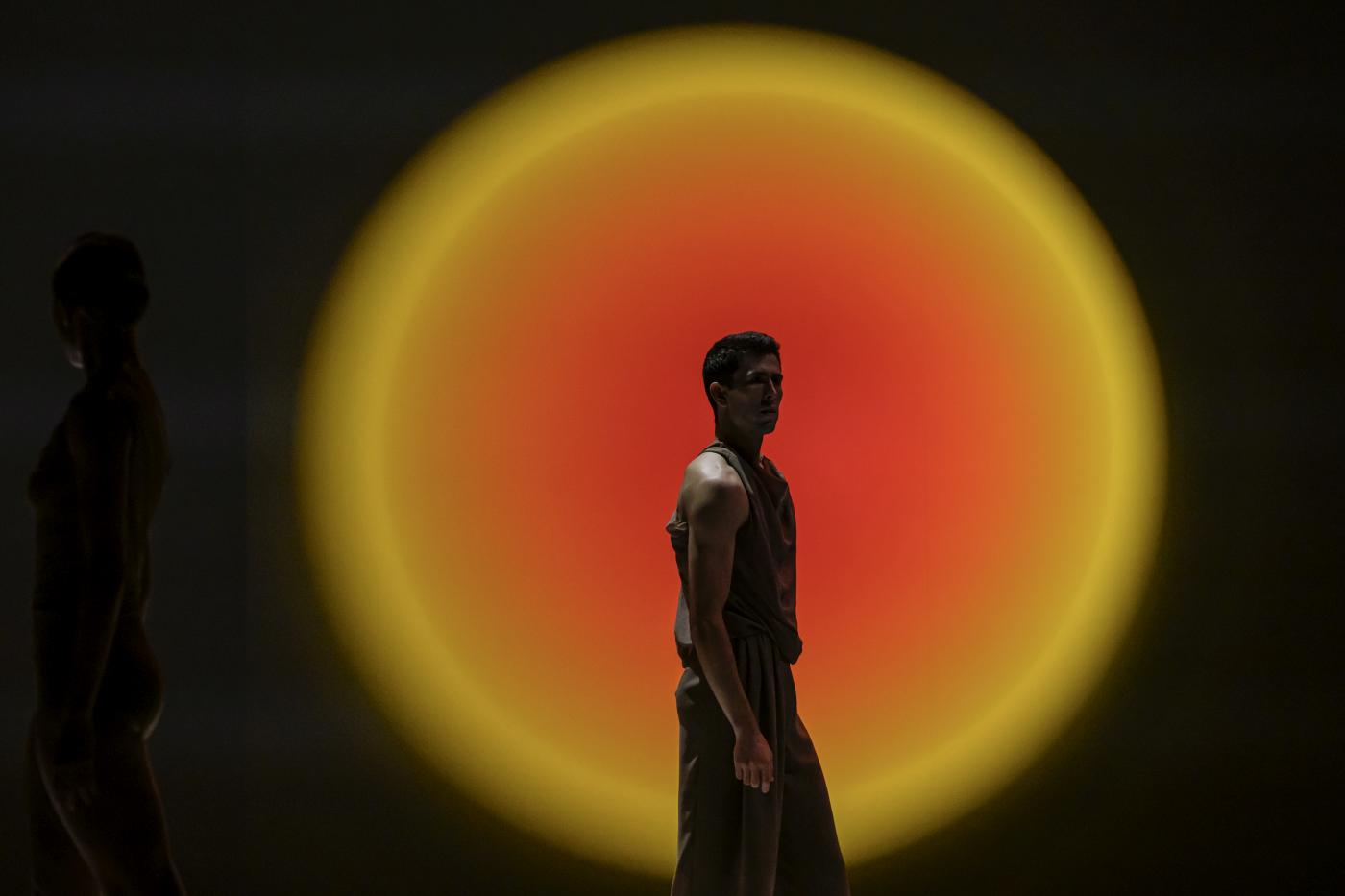 No one stood out in the casual, beige costumes by Annemarije van Harten, but they seemed part of a bigger picture. Often, fluid, circular arm movements implied a sense of all-encompassing unity. Slow piano passages deepened a meditative atmosphere.
No one stood out in the casual, beige costumes by Annemarije van Harten, but they seemed part of a bigger picture. Often, fluid, circular arm movements implied a sense of all-encompassing unity. Slow piano passages deepened a meditative atmosphere.
Tense moments occurred as well. In one scene, four women bourréed nervously as if tiptoeing on an agitating energy. The contrast between the small cuts their legs sliced into the air and their broad pliés was gripping. Later, as a second sun slowly sank, the dancers assembled around a woman with spider-like leg and arm movements.
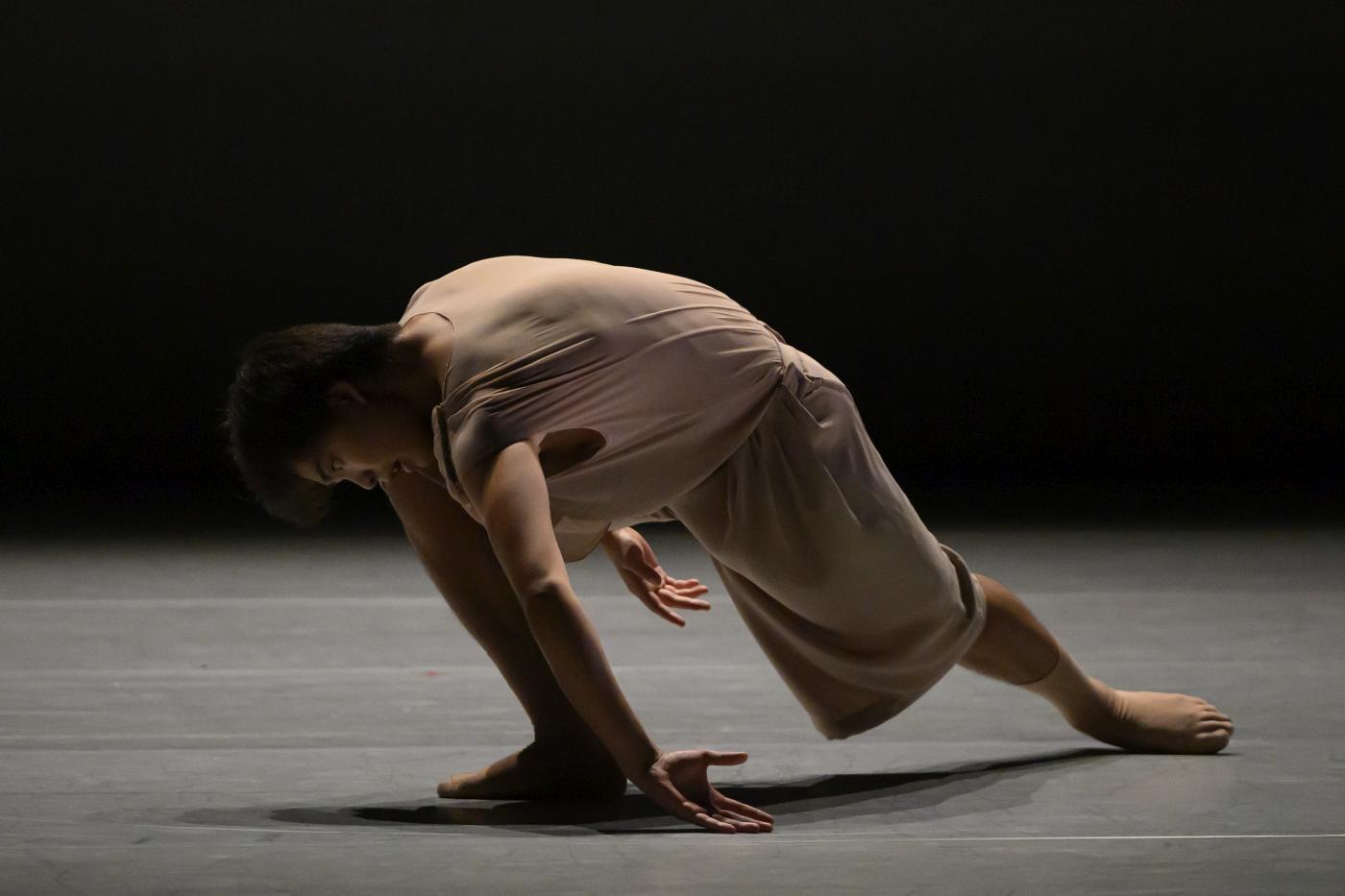
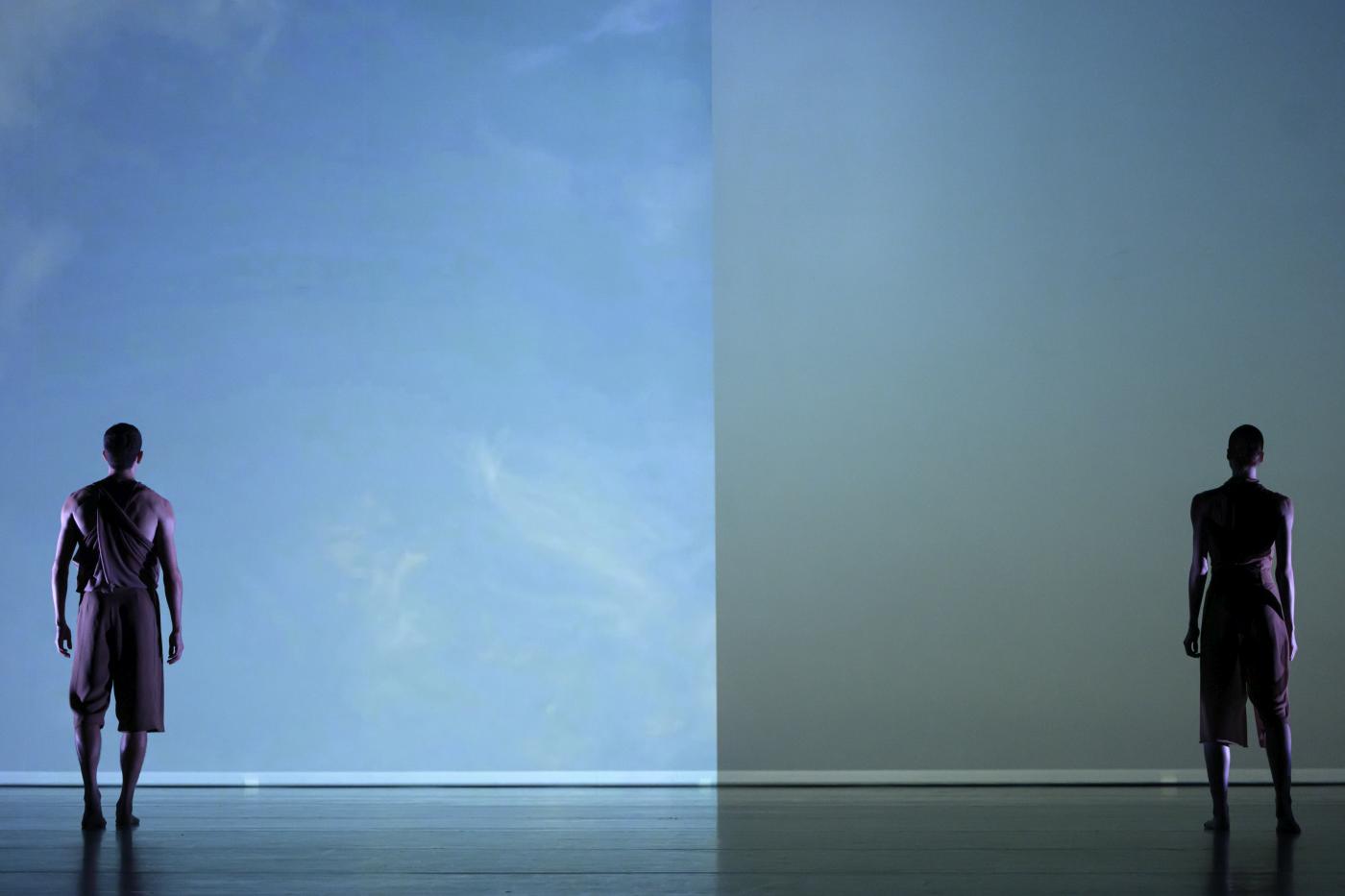 Tension rose as Kizuki Matsuyama stepped into the circle, but the couple that replaced him prevented escalation, even as they locked horns. The choreography’s focus weakened briefly, but the final group scene was again fascinating. It assembled all eight dancers, and their movements followed impulses that originated from different body parts. Both suns had sunk as a couple slowly walked in the twilight toward the horizon. For some seconds, a bird flew ahead of them.
Tension rose as Kizuki Matsuyama stepped into the circle, but the couple that replaced him prevented escalation, even as they locked horns. The choreography’s focus weakened briefly, but the final group scene was again fascinating. It assembled all eight dancers, and their movements followed impulses that originated from different body parts. Both suns had sunk as a couple slowly walked in the twilight toward the horizon. For some seconds, a bird flew ahead of them.
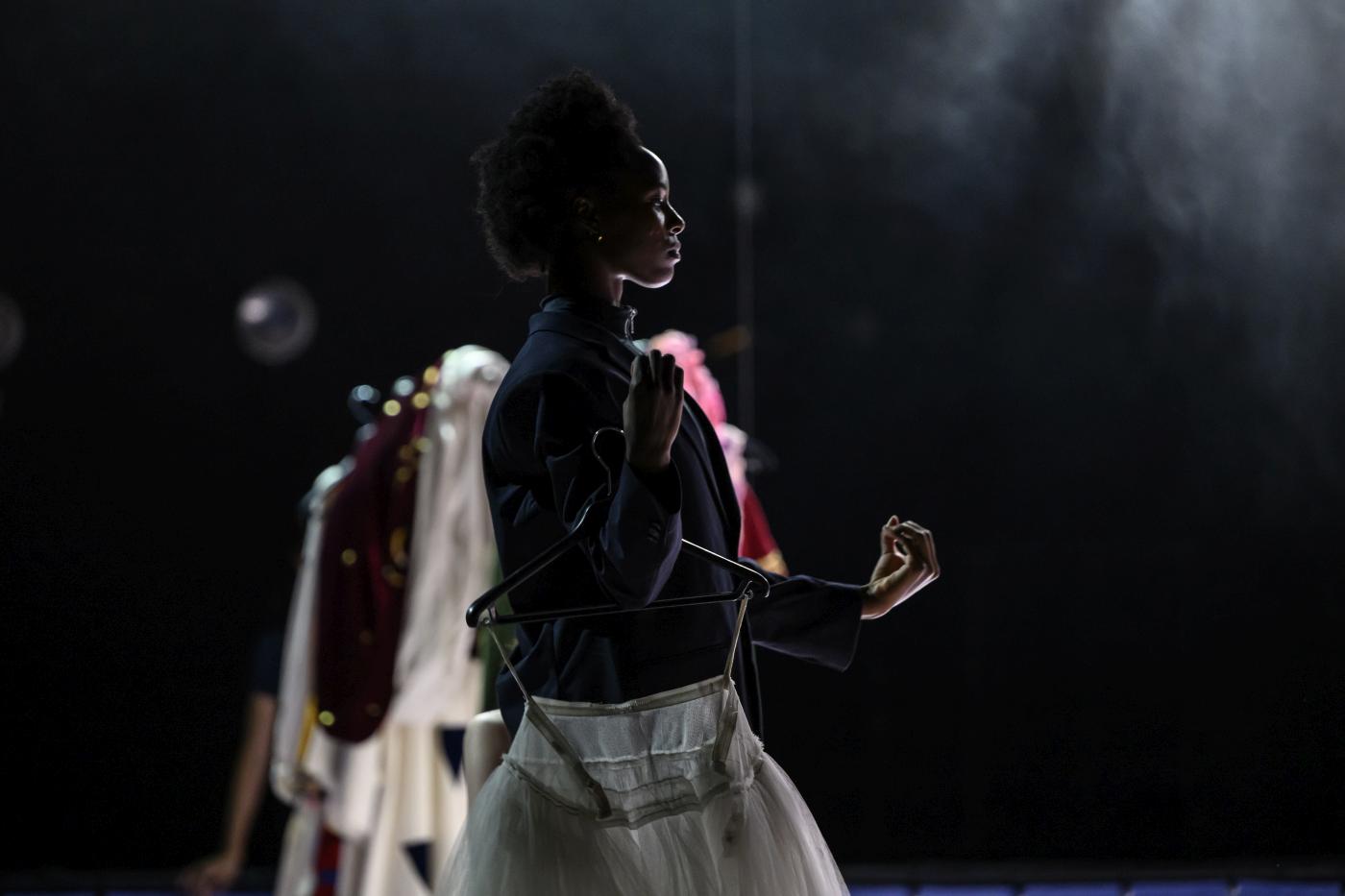
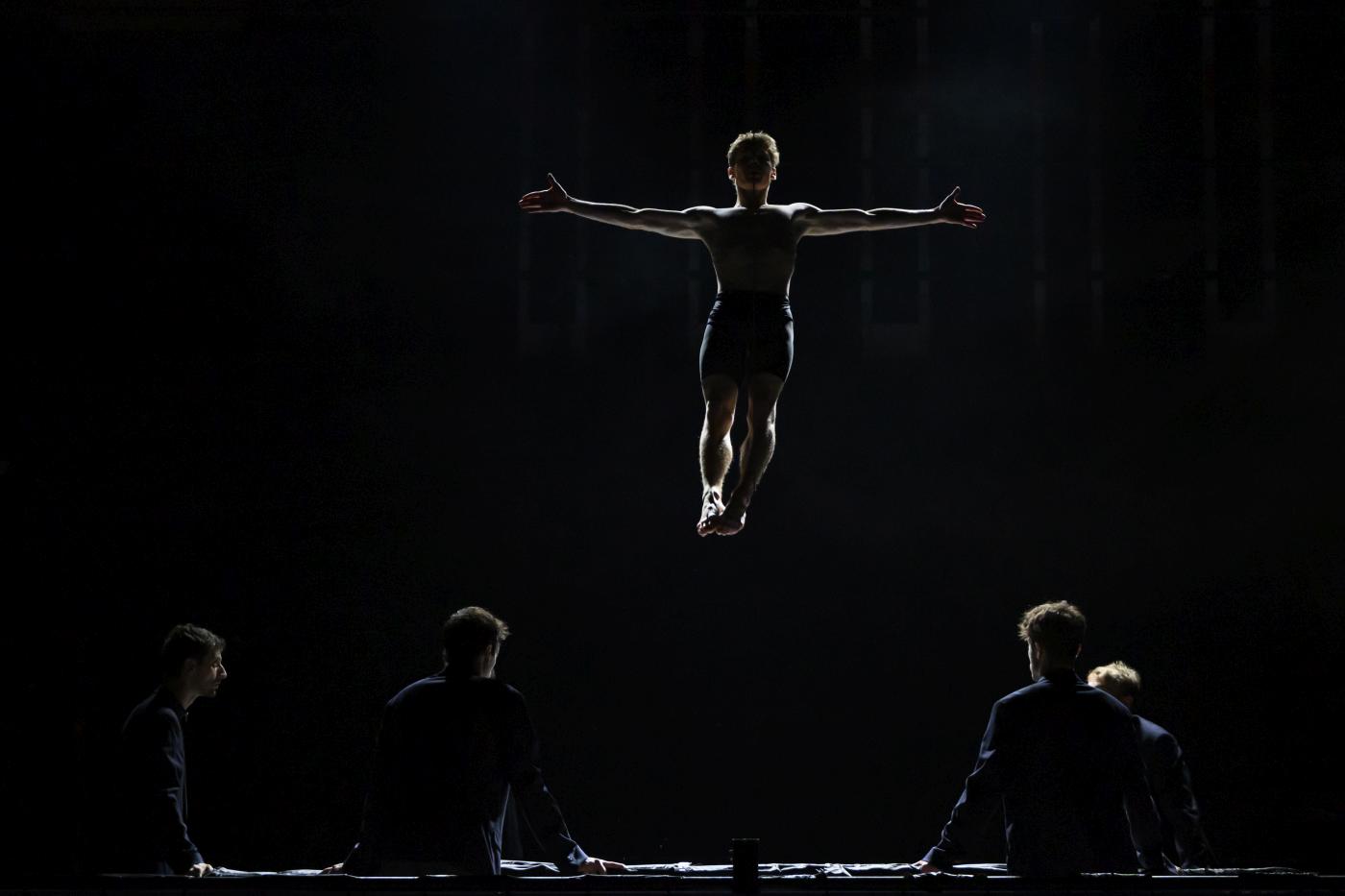 Ravel’s Boléro played as background music as the audience took their seats for the second act. The lights were still on when the sound level intensified and the curtain rose. Bronia opened with a man jumping and doing somersaults on a trampoline at the rear stage. On the front stage, two costume racks and some dancers were illuminated as they waited for their cues. Among them was a bride wearing a Giselle-like tutu and a veil (costumes by Luca Guarini, set by Amber Vandenhoeck, and lighting by Samuel Thery).
Ravel’s Boléro played as background music as the audience took their seats for the second act. The lights were still on when the sound level intensified and the curtain rose. Bronia opened with a man jumping and doing somersaults on a trampoline at the rear stage. On the front stage, two costume racks and some dancers were illuminated as they waited for their cues. Among them was a bride wearing a Giselle-like tutu and a veil (costumes by Luca Guarini, set by Amber Vandenhoeck, and lighting by Samuel Thery).

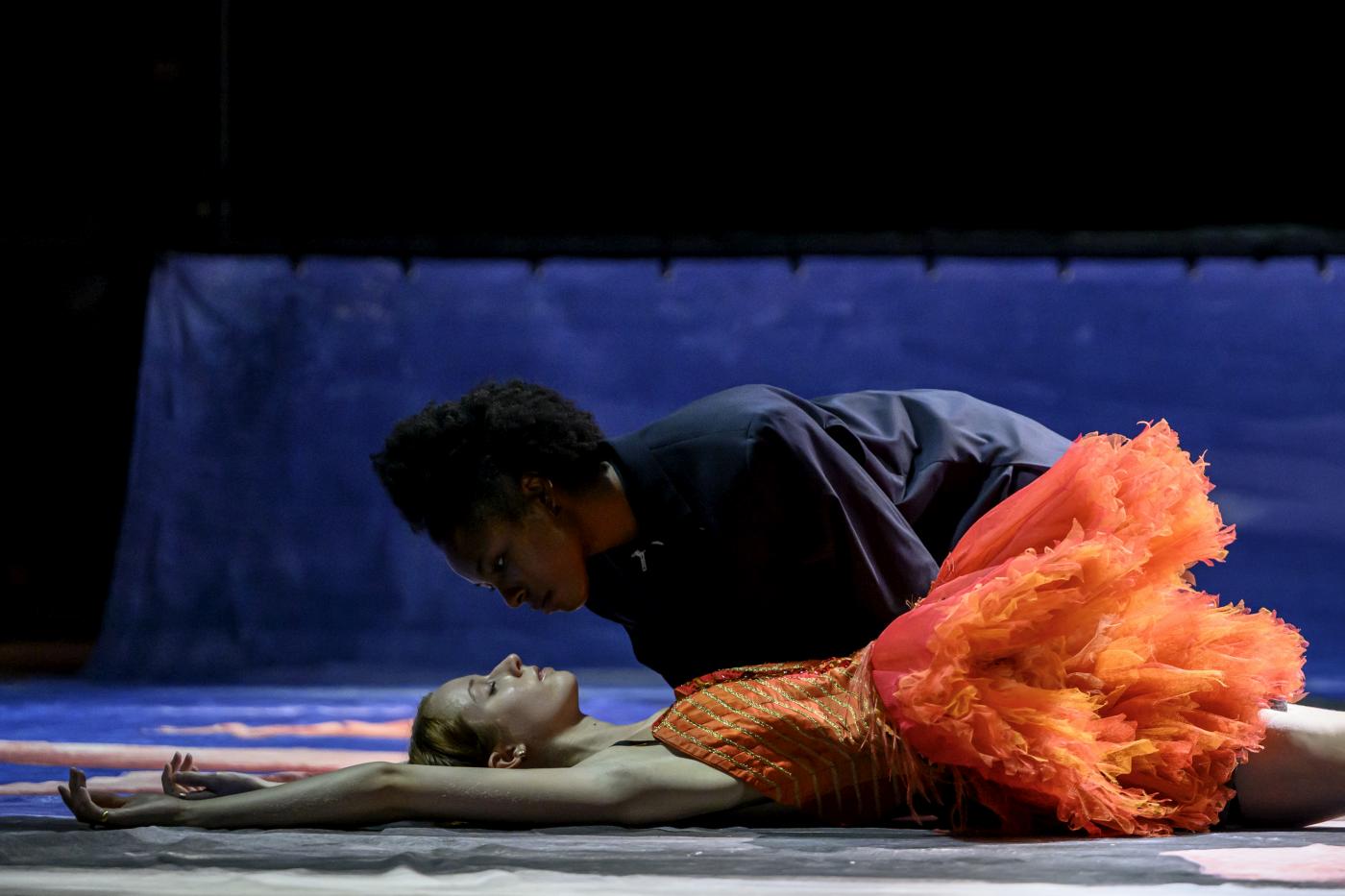 The trampoline jumper brought on a blackout when he landed flat on his back. A second later, the light was back on, and a female voiceover instructed the dancers on which positions to take. Surreal Pina Bausch-like scenes ensued. A man pulled a white tutu over his head as if it was a gauze wig; in the so-called “wedding” scene, the groom’s fingers circled his navel while another man kissed the bride’s hand. A woman in a red tutu reminiscent of the firebird stood motionless as if part of a still life. Portia Adam resembled a piece of furniture with the white tutu hanging from her outstretched arm contrasting with her dark skin.
The trampoline jumper brought on a blackout when he landed flat on his back. A second later, the light was back on, and a female voiceover instructed the dancers on which positions to take. Surreal Pina Bausch-like scenes ensued. A man pulled a white tutu over his head as if it was a gauze wig; in the so-called “wedding” scene, the groom’s fingers circled his navel while another man kissed the bride’s hand. A woman in a red tutu reminiscent of the firebird stood motionless as if part of a still life. Portia Adam resembled a piece of furniture with the white tutu hanging from her outstretched arm contrasting with her dark skin.

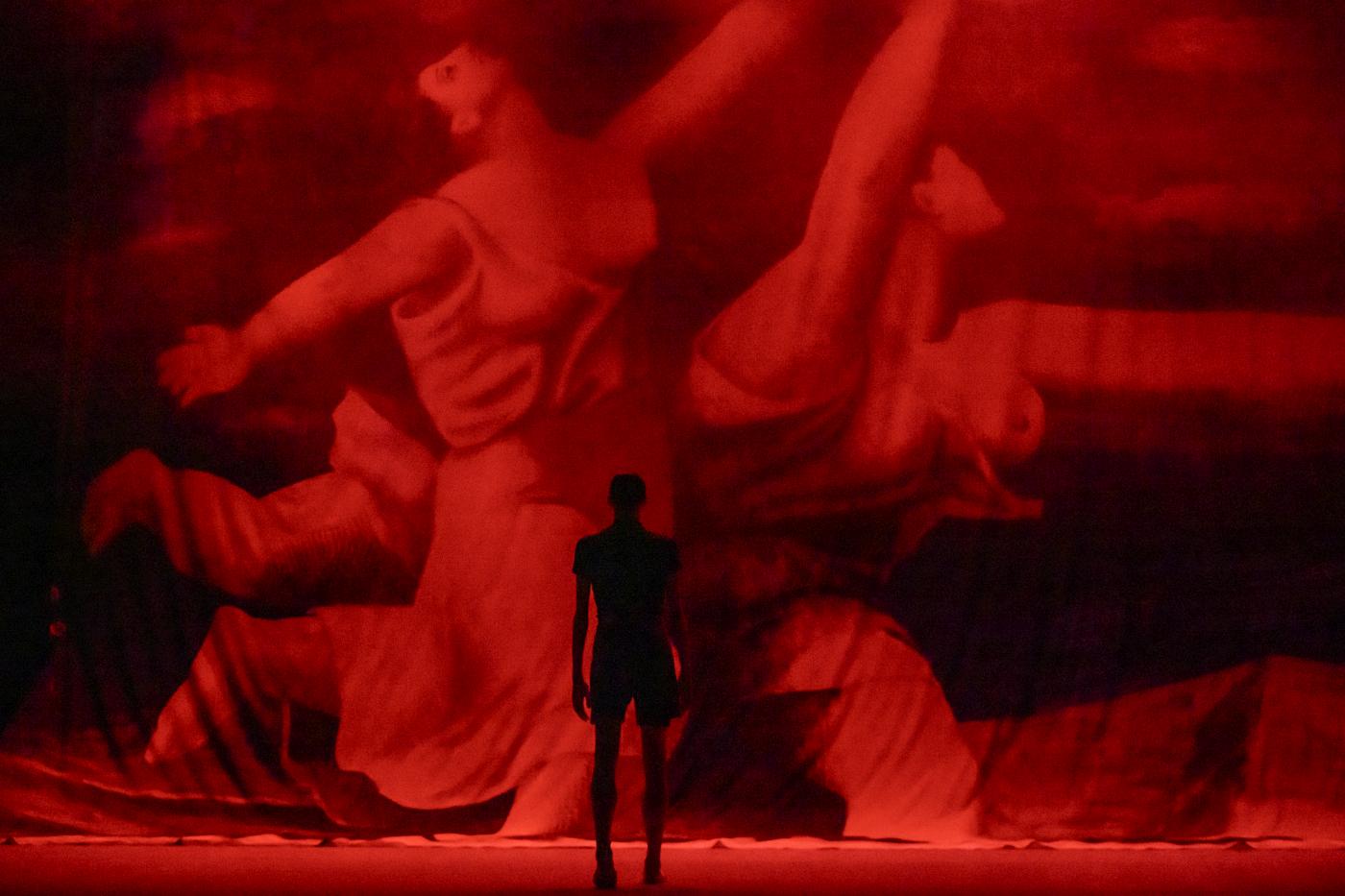 Throbbing sounds reminiscent of an old heartbeat accompanied the huge curtain that suddenly rose from a railing in front of the trampoline. What slowly unfolded made me hold my breath. It was Picasso’s front cloth for Le Train Bleu, Bronislava Nijinska’s one-act choreography for the Ballets Russes in 1924. There could have been no better symbol to highlight Bronia’s homage to Nijinska. With one stroke, the curtain brought history back.
Throbbing sounds reminiscent of an old heartbeat accompanied the huge curtain that suddenly rose from a railing in front of the trampoline. What slowly unfolded made me hold my breath. It was Picasso’s front cloth for Le Train Bleu, Bronislava Nijinska’s one-act choreography for the Ballets Russes in 1924. There could have been no better symbol to highlight Bronia’s homage to Nijinska. With one stroke, the curtain brought history back.
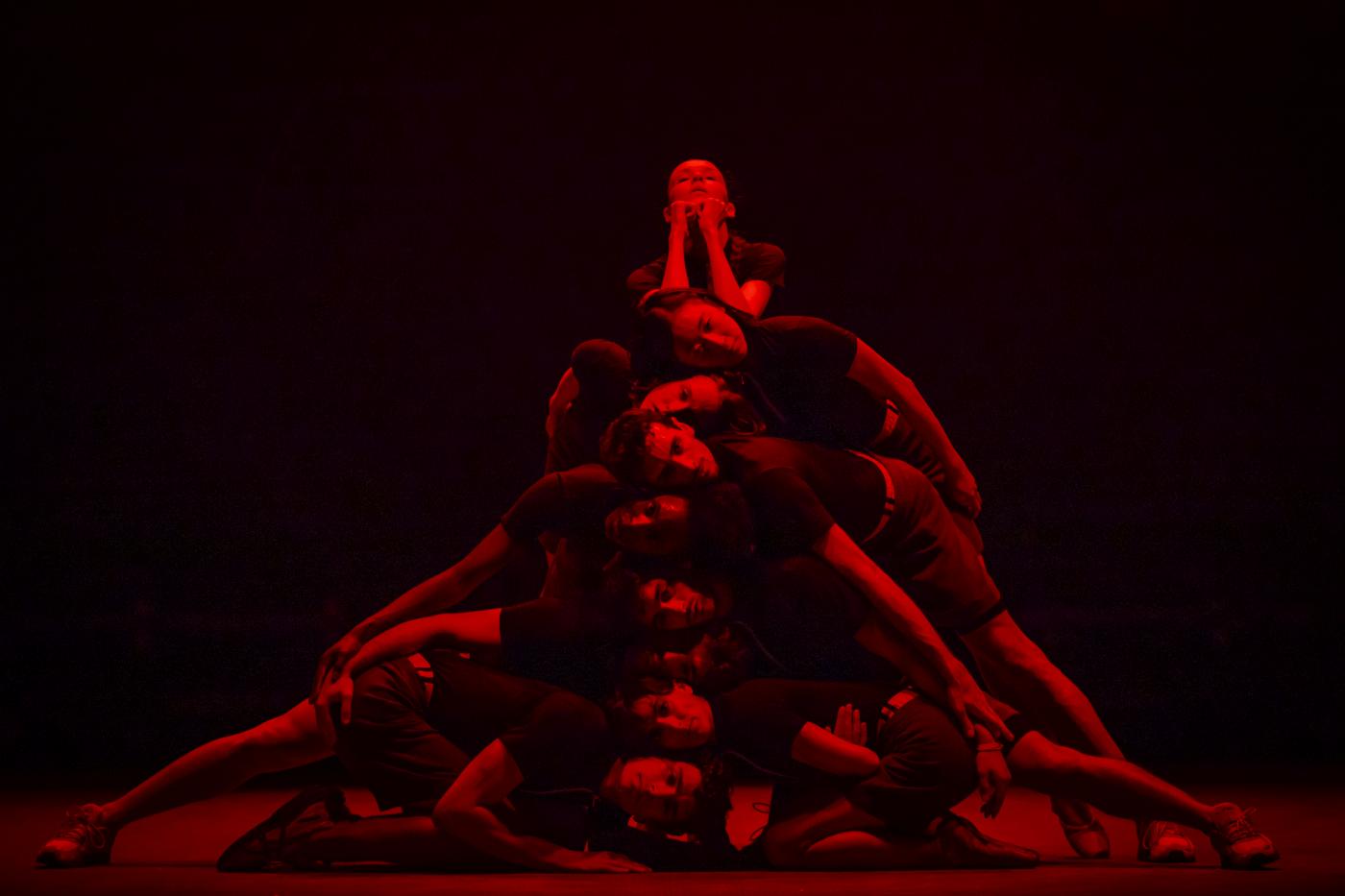
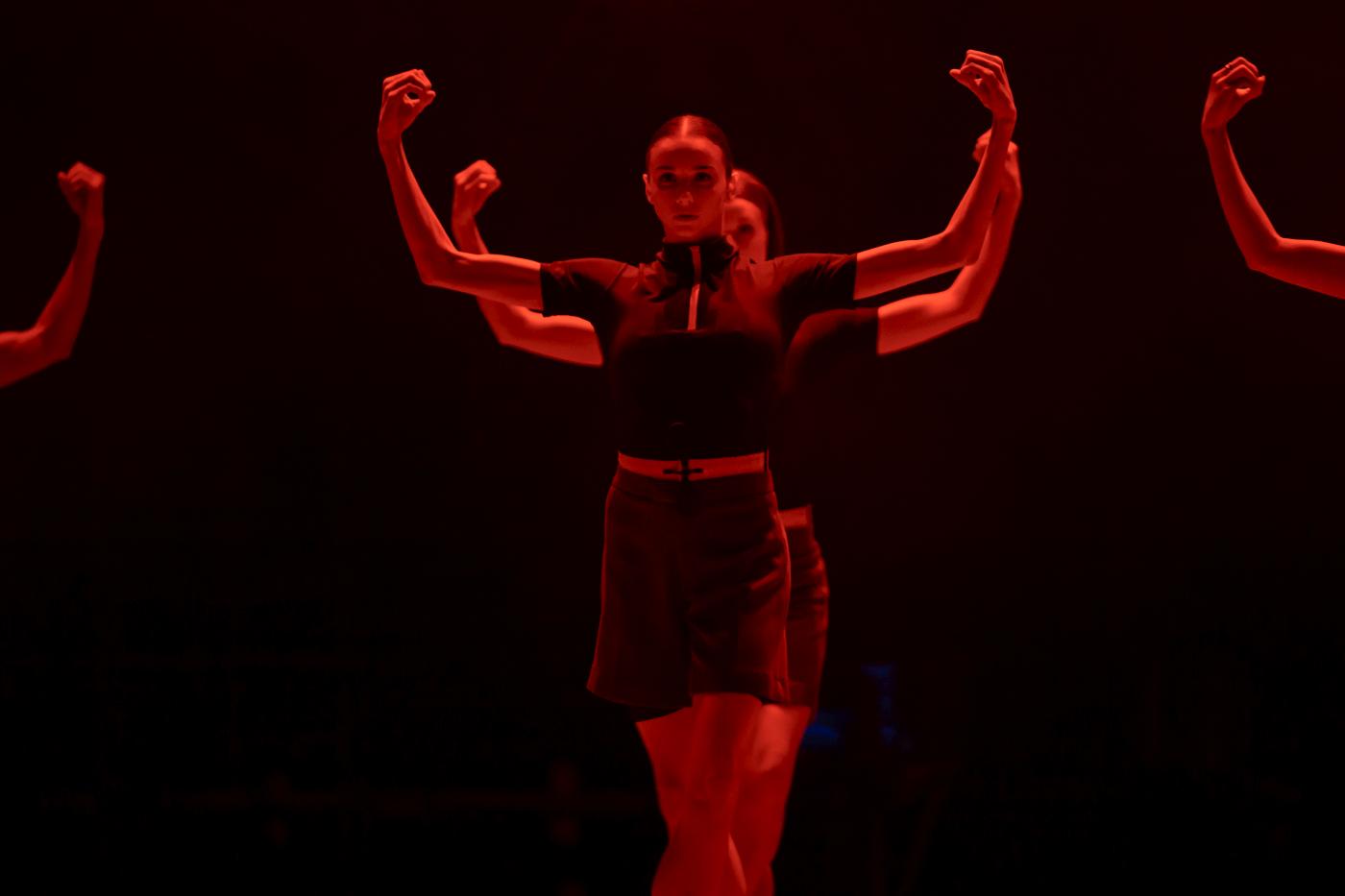 Presumably, when creating Bronia, Russo and de Rosa were unfamiliar with Russia’s cultural search festival “We Need Diaghilev,” which was initiated last year to overcome the separation between Russia and the West. As part of the festival, the ballet Diaghilev premiered at the Bolshoi just three weeks before the premiere of Bronia. Diaghilev invokes the impresario’s creative spirit. This spirit must have clandestinely crossed borders and taken up residence in Monte-Carlo. Suddenly, anticipation and excitement filled the auditorium.
Presumably, when creating Bronia, Russo and de Rosa were unfamiliar with Russia’s cultural search festival “We Need Diaghilev,” which was initiated last year to overcome the separation between Russia and the West. As part of the festival, the ballet Diaghilev premiered at the Bolshoi just three weeks before the premiere of Bronia. Diaghilev invokes the impresario’s creative spirit. This spirit must have clandestinely crossed borders and taken up residence in Monte-Carlo. Suddenly, anticipation and excitement filled the auditorium.
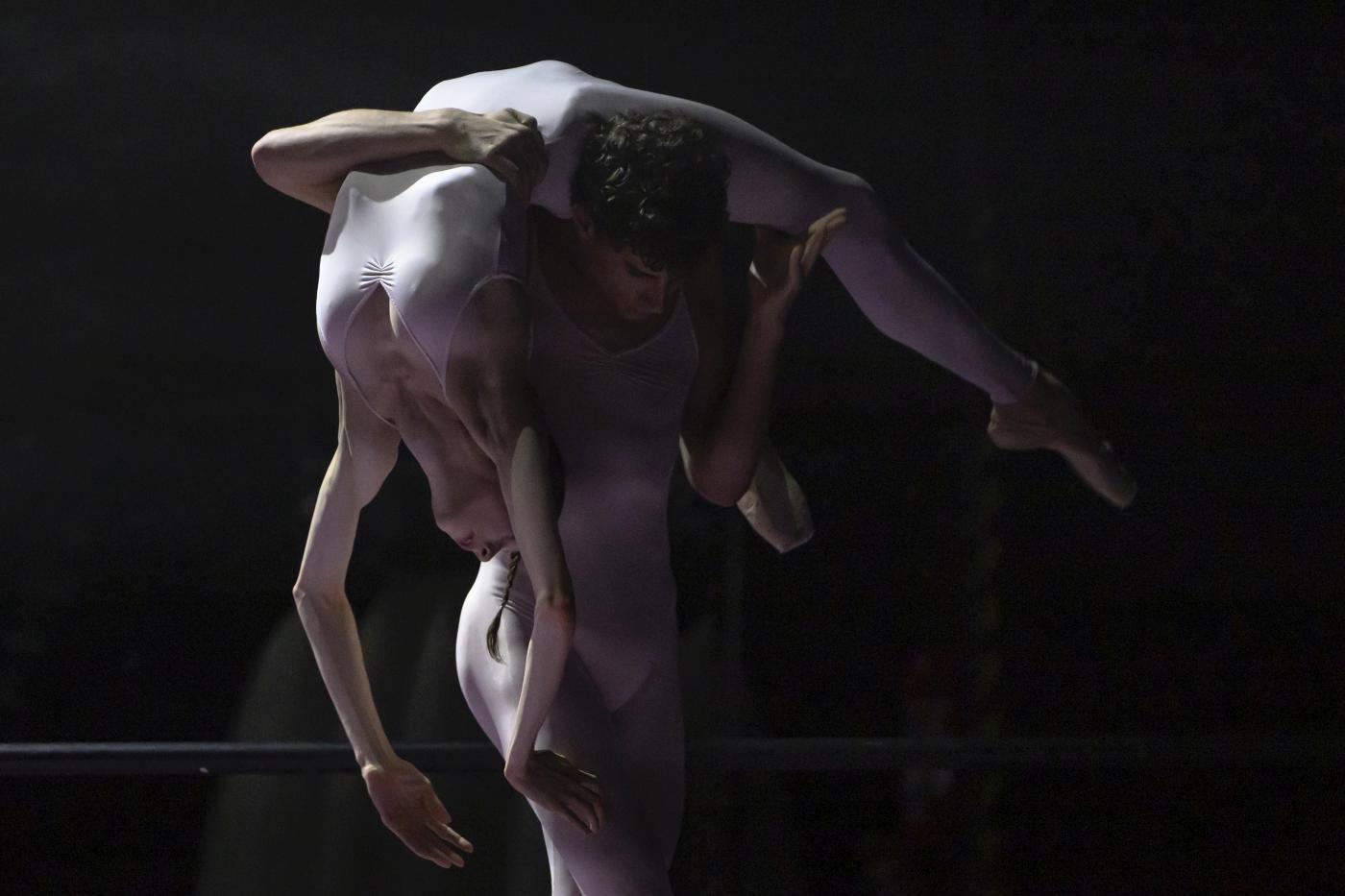
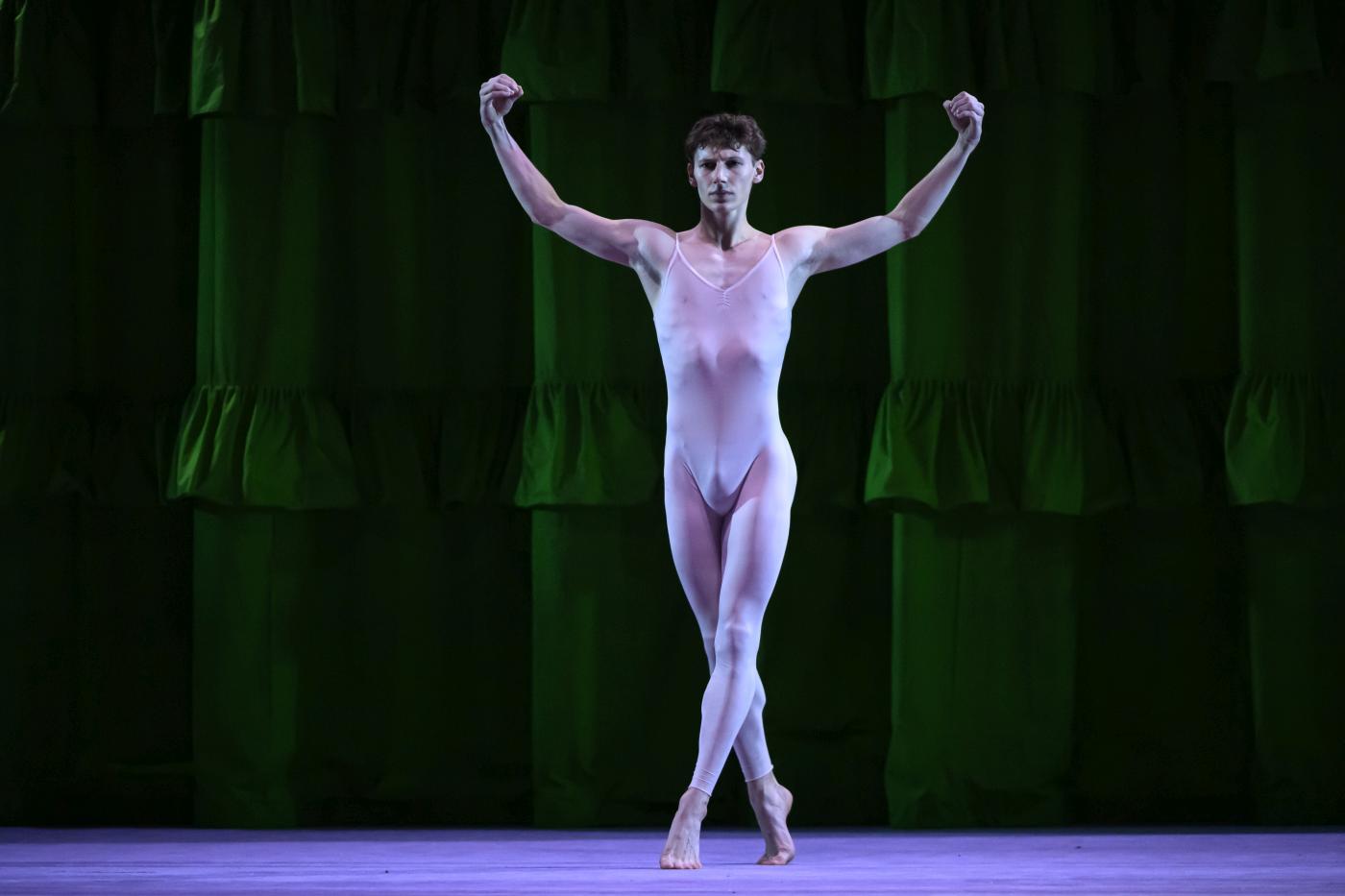 The music’s beat drove forward a group of dancers in blue, sailor-like outfits. Their upraised arms and loosely closed fists likened them to descendants of Le Train Bleu. The pulsing strobe light gave their movements a trendy, slow-motion video dance look. A bright red light from above replaced some iconic scenes of Nijinska’s Les Noces in a hell-like grotto. I don’t know of any choreography in which Nijinska used Debussy’s Clair de Lune, but maybe it was played live on stage as a nod to Nijinsky’s L’Après-midi d’un faune. The pas de deux accompanied by a piano was fresh and sleek. The electronic noise, to which a bustle of dancers in white tutus hopped around in sneakers like modern Giselles, was annoying, and the stage was lit so brightly that it blinded the eyes.
The music’s beat drove forward a group of dancers in blue, sailor-like outfits. Their upraised arms and loosely closed fists likened them to descendants of Le Train Bleu. The pulsing strobe light gave their movements a trendy, slow-motion video dance look. A bright red light from above replaced some iconic scenes of Nijinska’s Les Noces in a hell-like grotto. I don’t know of any choreography in which Nijinska used Debussy’s Clair de Lune, but maybe it was played live on stage as a nod to Nijinsky’s L’Après-midi d’un faune. The pas de deux accompanied by a piano was fresh and sleek. The electronic noise, to which a bustle of dancers in white tutus hopped around in sneakers like modern Giselles, was annoying, and the stage was lit so brightly that it blinded the eyes.
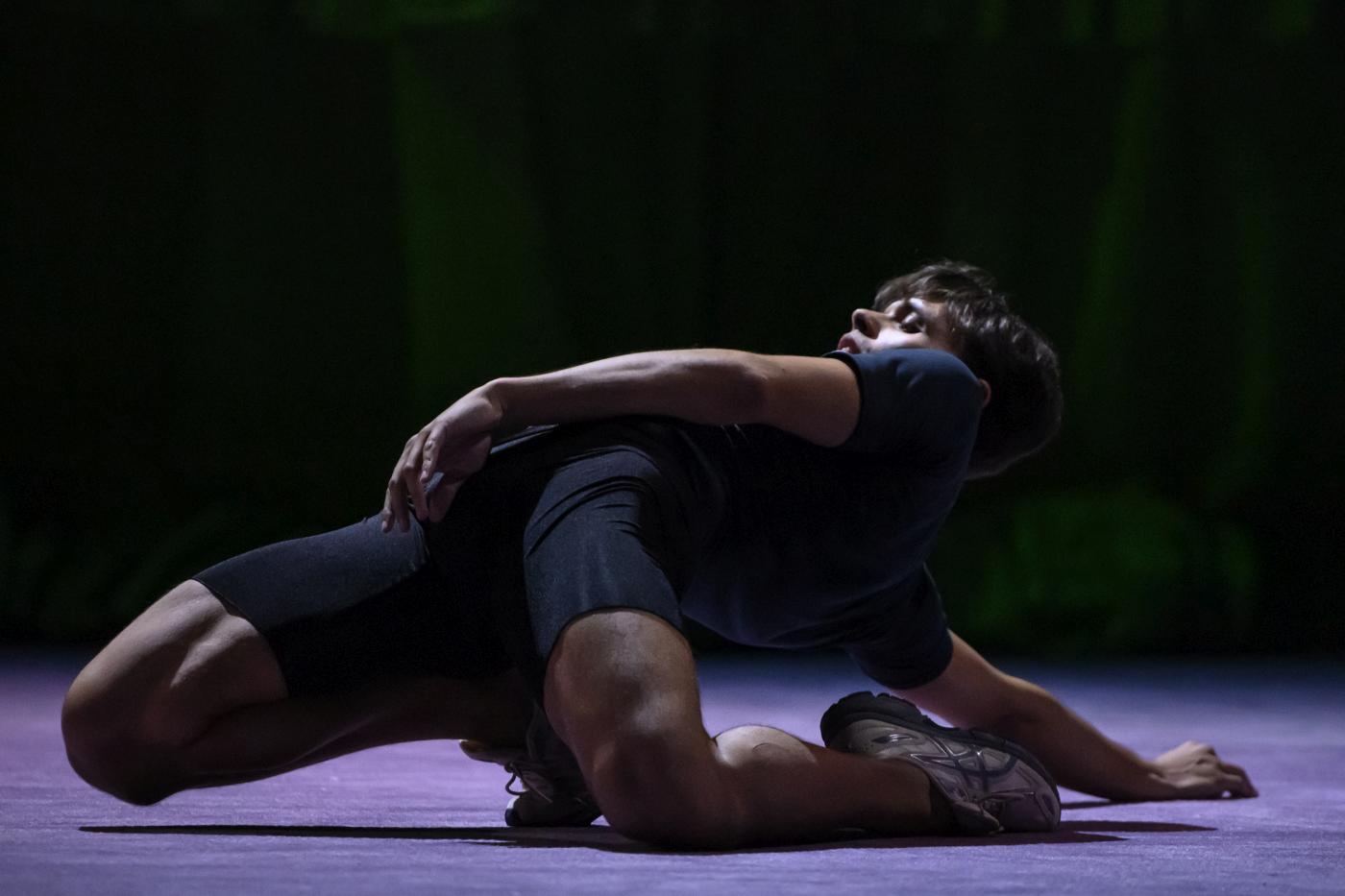
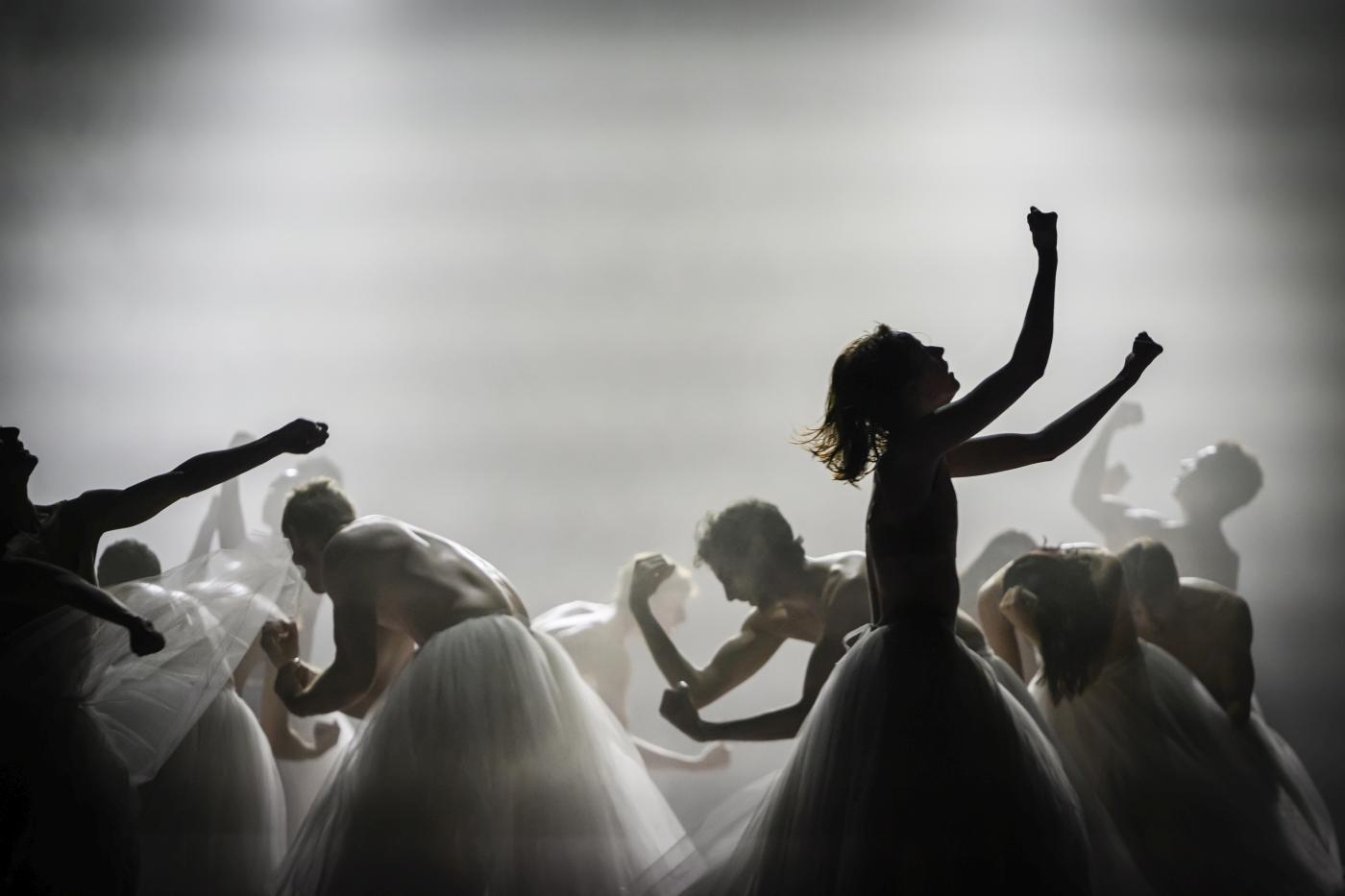 Maybe the French voiceover explained the meaning of the ritual dance and male singing, which was reminiscent of African culture.
Maybe the French voiceover explained the meaning of the ritual dance and male singing, which was reminiscent of African culture.
Mimoza Koike, sitting at the front stage, counted Bronia down. The clonking of her pointe shoe on the floor sounded like the tick-tock of a winding-down clock. Behind her, a man in a white tutu did his last somersaults on the trampoline.
I left the Opéra with a feeling that something big was underway.
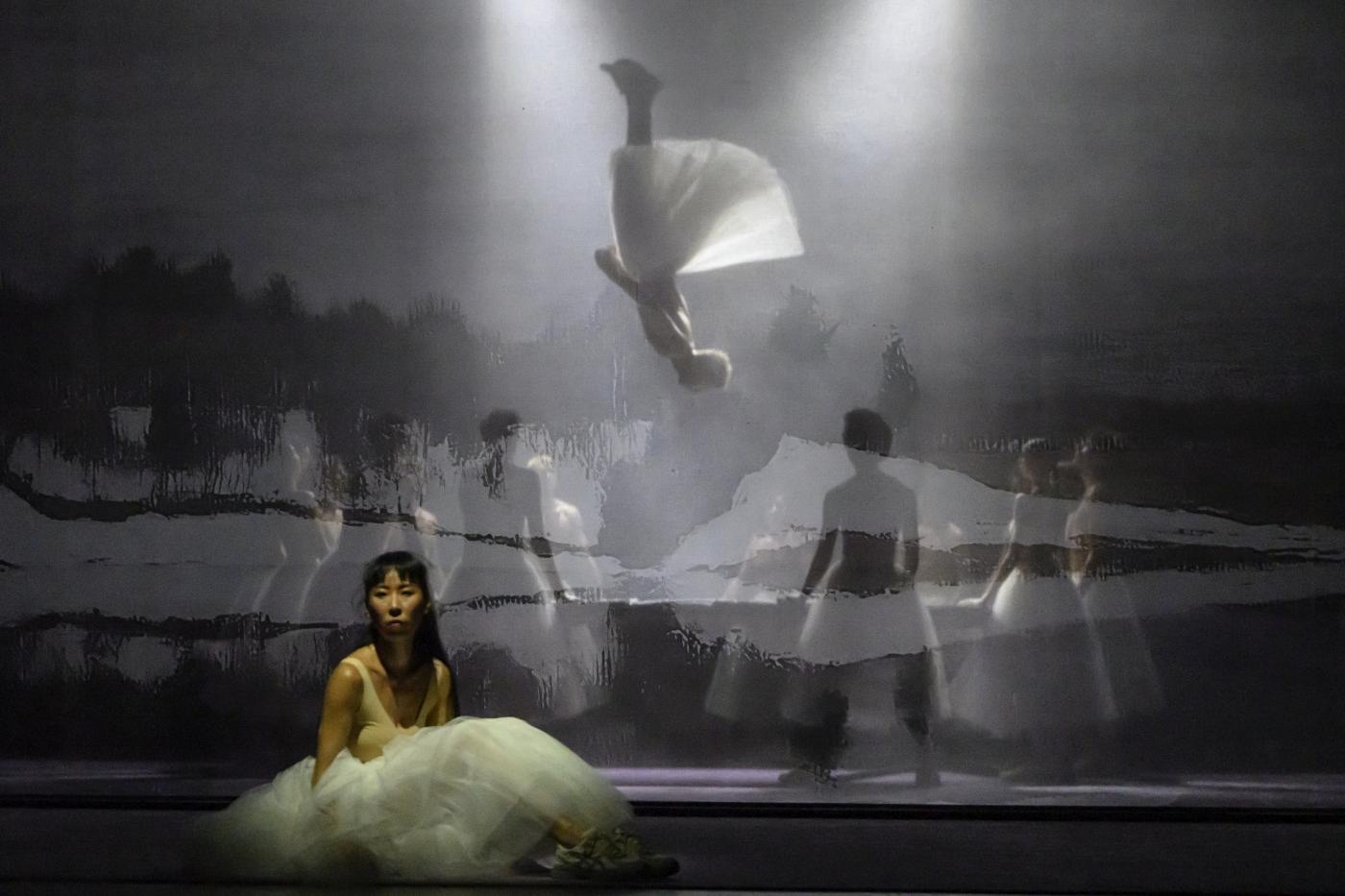
| Links: | Website of Les Ballets de Monte-Carlo | |
| Video Report about “Twilight” and “Bronia”, Monaco Info | ||
| Creation of “Twilight” by Lukáš Timulak | ||
| Photos: | 1. | Ensemble, “Twilight” by Lukáš Timulak, Les Ballets de Monte-Carlo 2025 |
| 2. | Ensemble, “Twilight” by Lukáš Timulak, Les Ballets de Monte-Carlo 2025 | |
| 3. | Ensemble, “Twilight” by Lukáš Timulak, Les Ballets de Monte-Carlo 2025 | |
| 4. | Ensemble, “Twilight” by Lukáš Timulak, Les Ballets de Monte-Carlo 2025 | |
| 5. | Ensemble, “Twilight” by Lukáš Timulak, Les Ballets de Monte-Carlo 2025 | |
| 6. | Ensemble, “Twilight” by Lukáš Timulak, Les Ballets de Monte-Carlo 2025 | |
| 7. | Ensemble, “Twilight” by Lukáš Timulak, Les Ballets de Monte-Carlo 2025 | |
| 8. | Ensemble, “Twilight” by Lukáš Timulak, Les Ballets de Monte-Carlo 2025 | |
| 9. | Ensemble, “Twilight” by Lukáš Timulak, Les Ballets de Monte-Carlo 2025 | |
| 10. | Ensemble, “Bronia” by Mattia Russo and Antonio de Rosa, Les Ballets de Monte-Carlo 2025 | |
| 11. | Portia Adams,“Bronia” by Mattia Russo and Antonio de Rosa, Les Ballets de Monte-Carlo 2025 | |
| 12. | Portia Adams and ensemble, “Bronia” by Mattia Russo and Antonio de Rosa, Les Ballets de Monte-Carlo 2025 | |
| 13. | Portia Adams and ensemble, “Bronia” by Mattia Russo and Antonio de Rosa, Les Ballets de Monte-Carlo 2025 | |
| 14. | Ensemble, “Bronia” by Mattia Russo and Antonio de Rosa, Les Ballets de Monte-Carlo 2025 | |
| 15. | Ensemble, “Bronia” by Mattia Russo and Antonio de Rosa, Les Ballets de Monte-Carlo 2025 | |
| 16. | Ensemble, “Bronia” by Mattia Russo and Antonio de Rosa, Les Ballets de Monte-Carlo 2025 | |
| 17. | Ensemble, “Bronia” by Mattia Russo and Antonio de Rosa, Les Ballets de Monte-Carlo 2025 | |
| 18. | Ensemble, “Bronia” by Mattia Russo and Antonio de Rosa, Les Ballets de Monte-Carlo 2025 | |
| 19. | Ensemble, “Bronia” by Mattia Russo and Antonio de Rosa, Les Ballets de Monte-Carlo 2025 | |
| 20. | Ensemble, “Bronia” by Mattia Russo and Antonio de Rosa, Les Ballets de Monte-Carlo 2025 | |
| 21. | Ensemble, “Bronia” by Mattia Russo and Antonio de Rosa, Les Ballets de Monte-Carlo 2025 | |
| 22. | Mimoza Koike and ensemble, “Bronia” by Mattia Russo and Antonio de Rosa, Les Ballets de Monte-Carlo 2025 | |
| all photos © Alice Blangero | ||
| Editing: | Kayla Kauffman |

